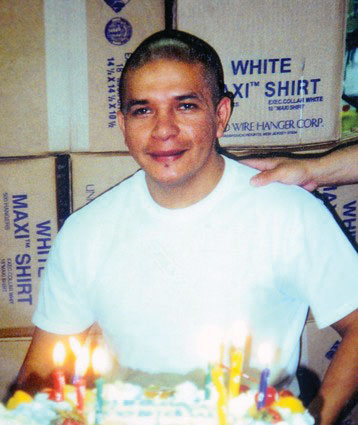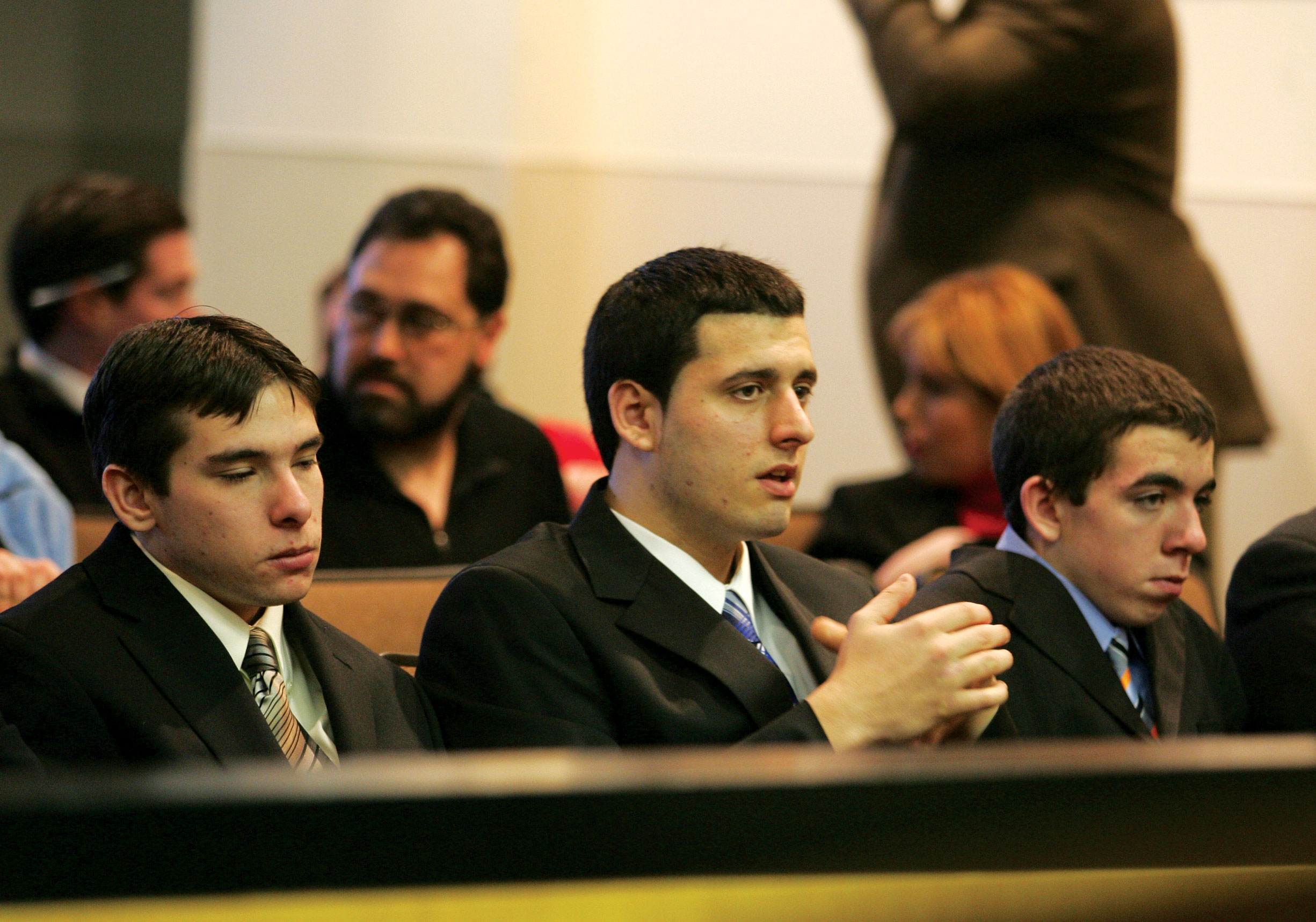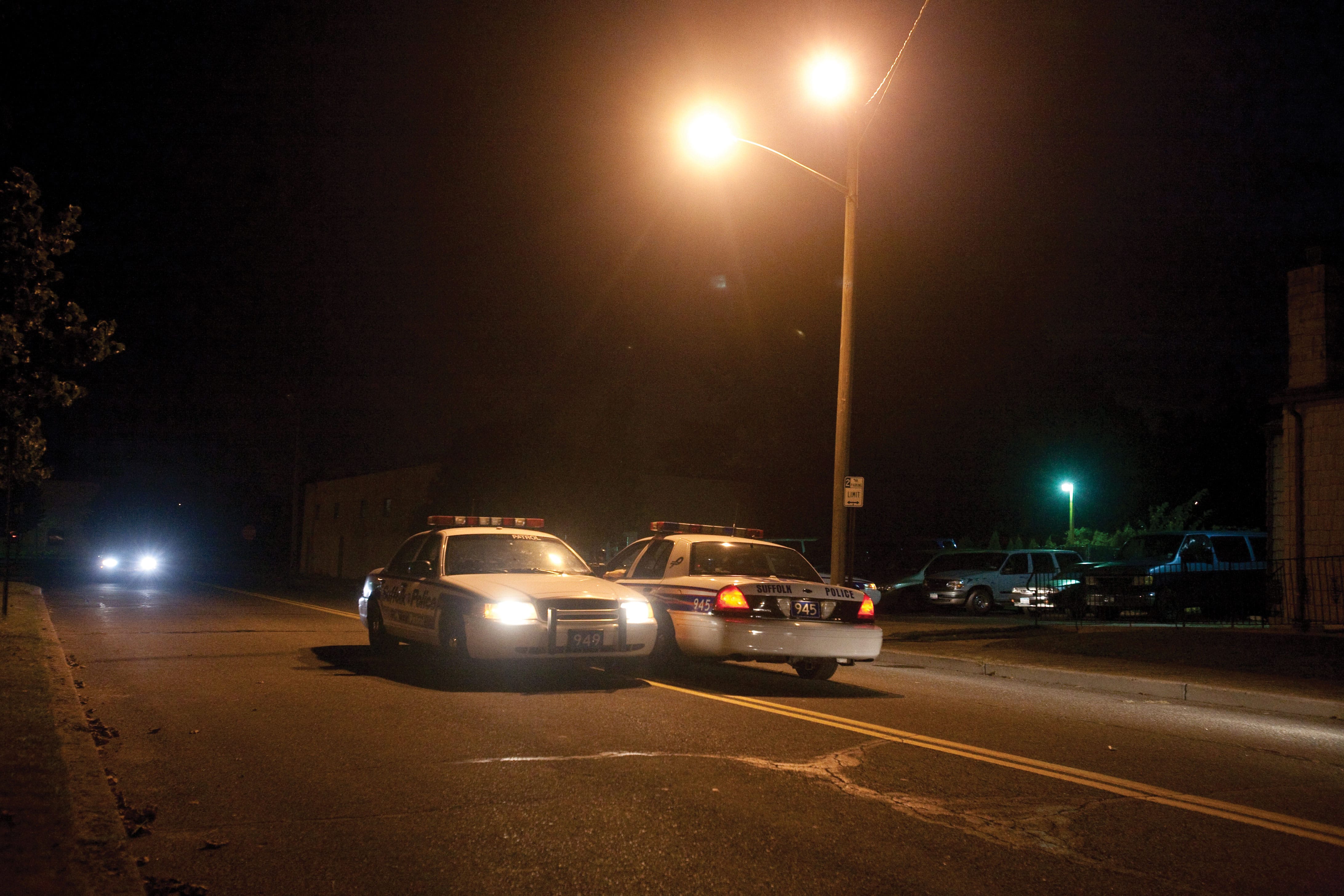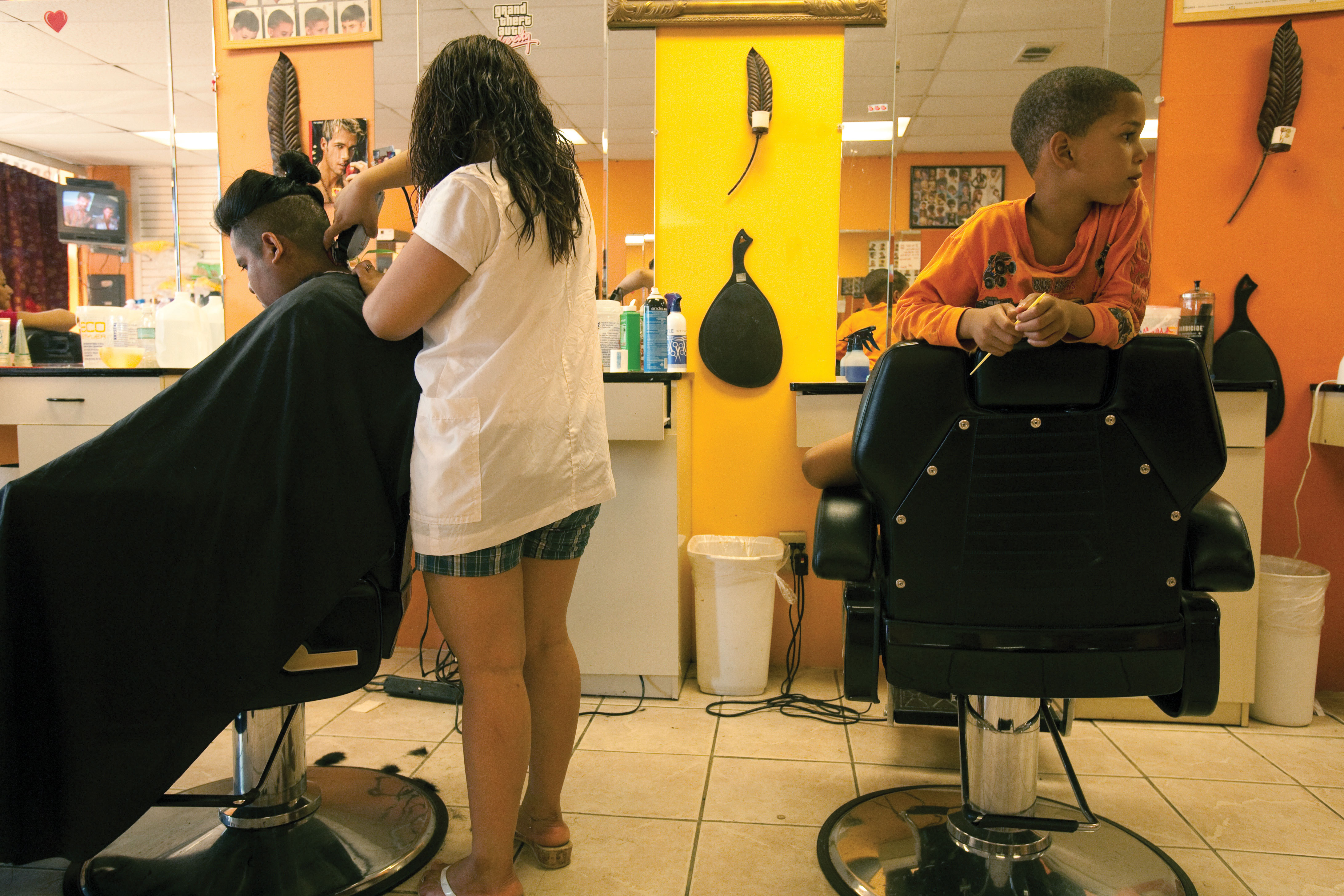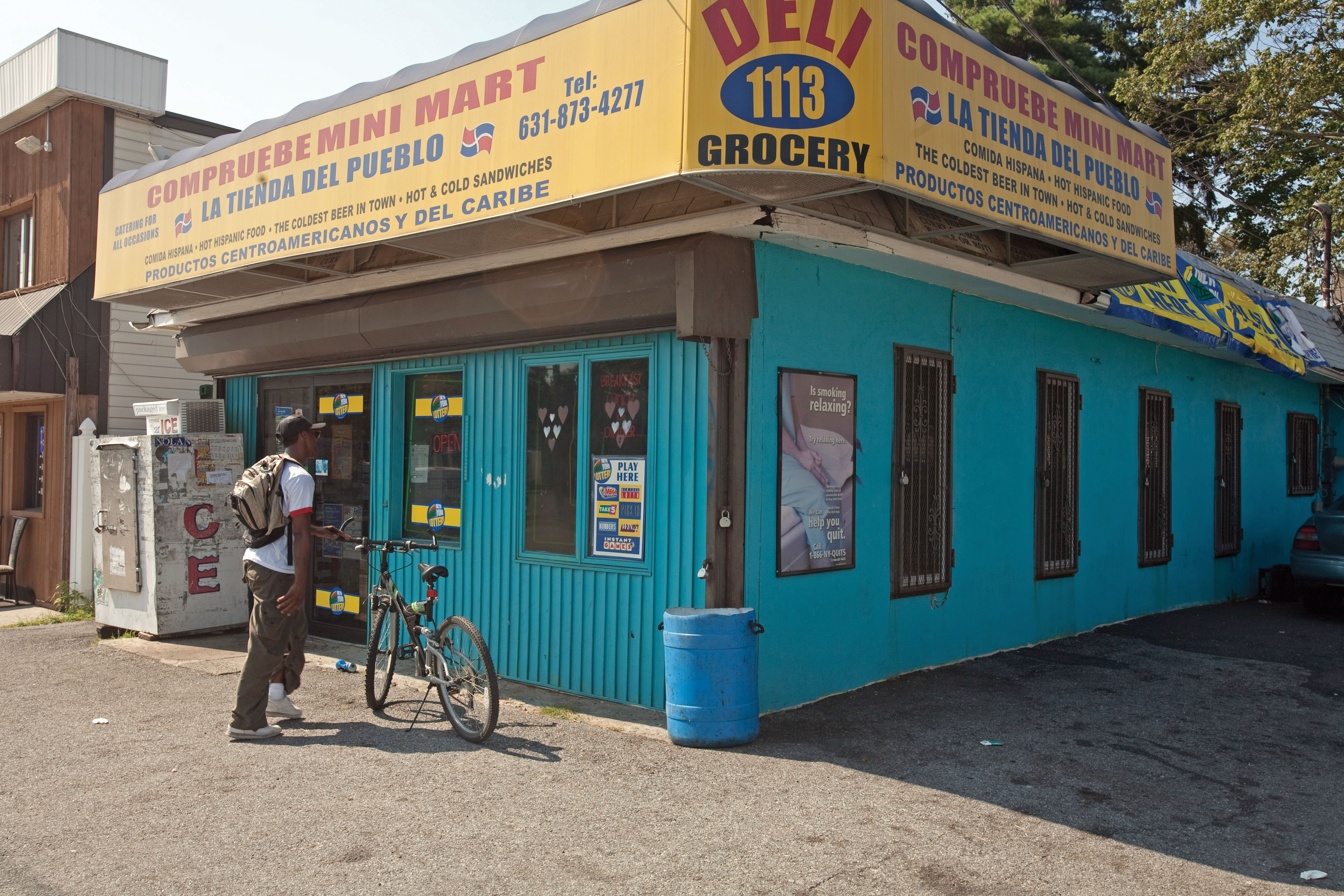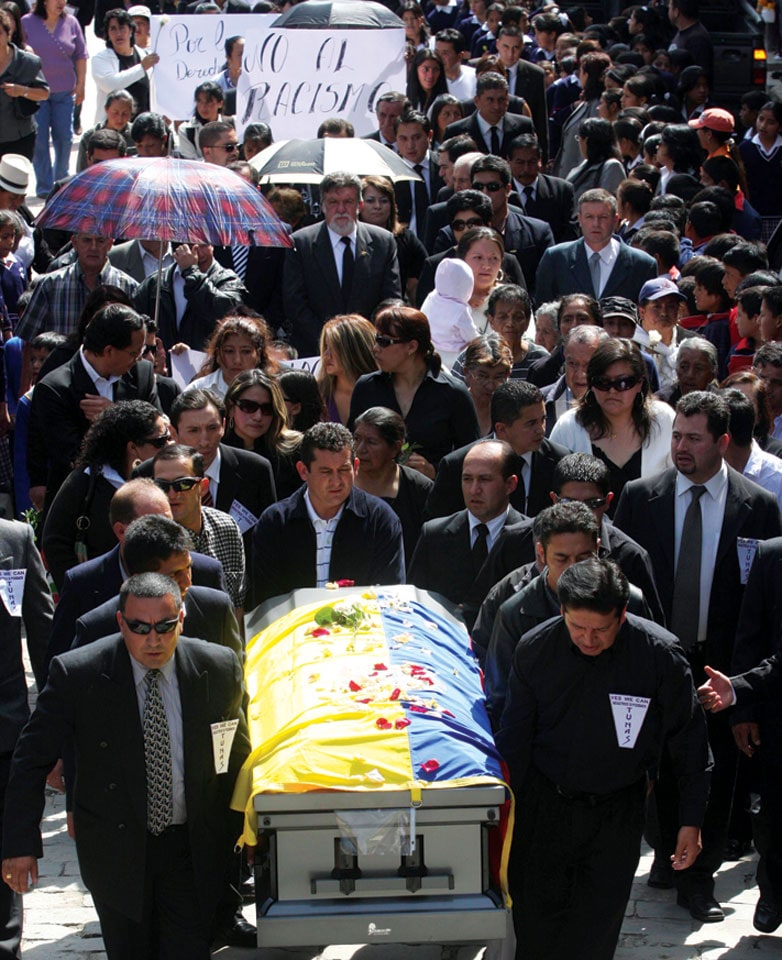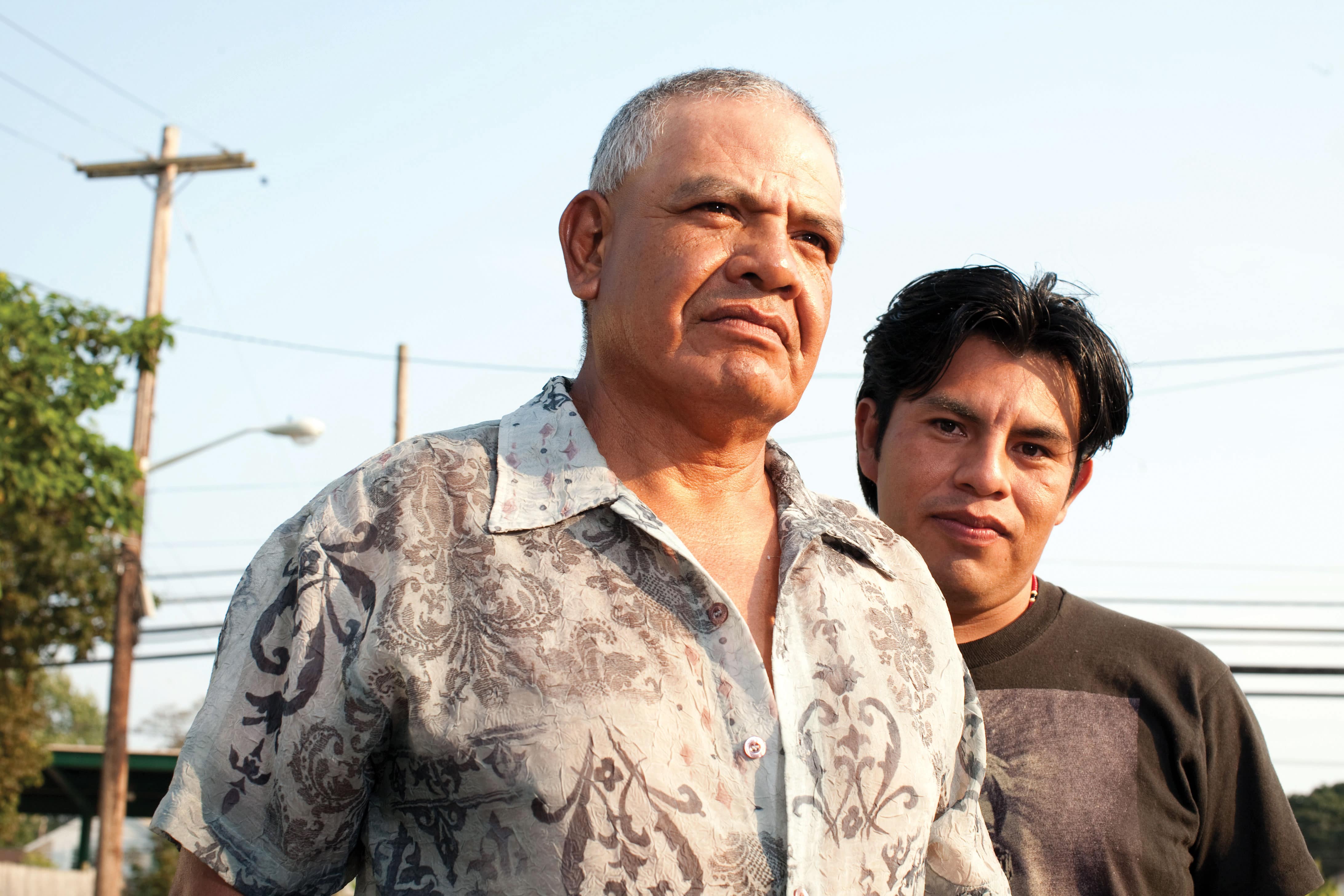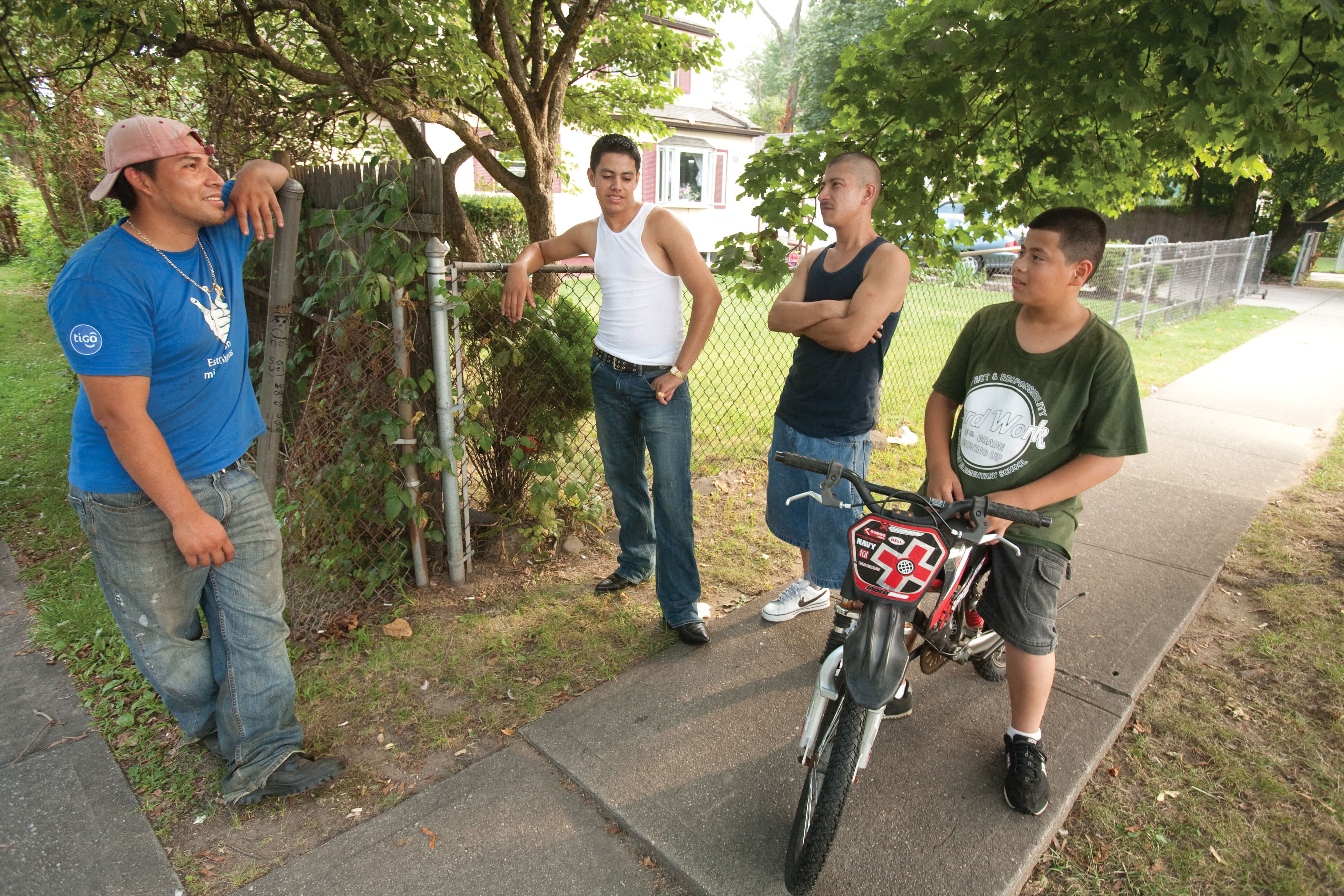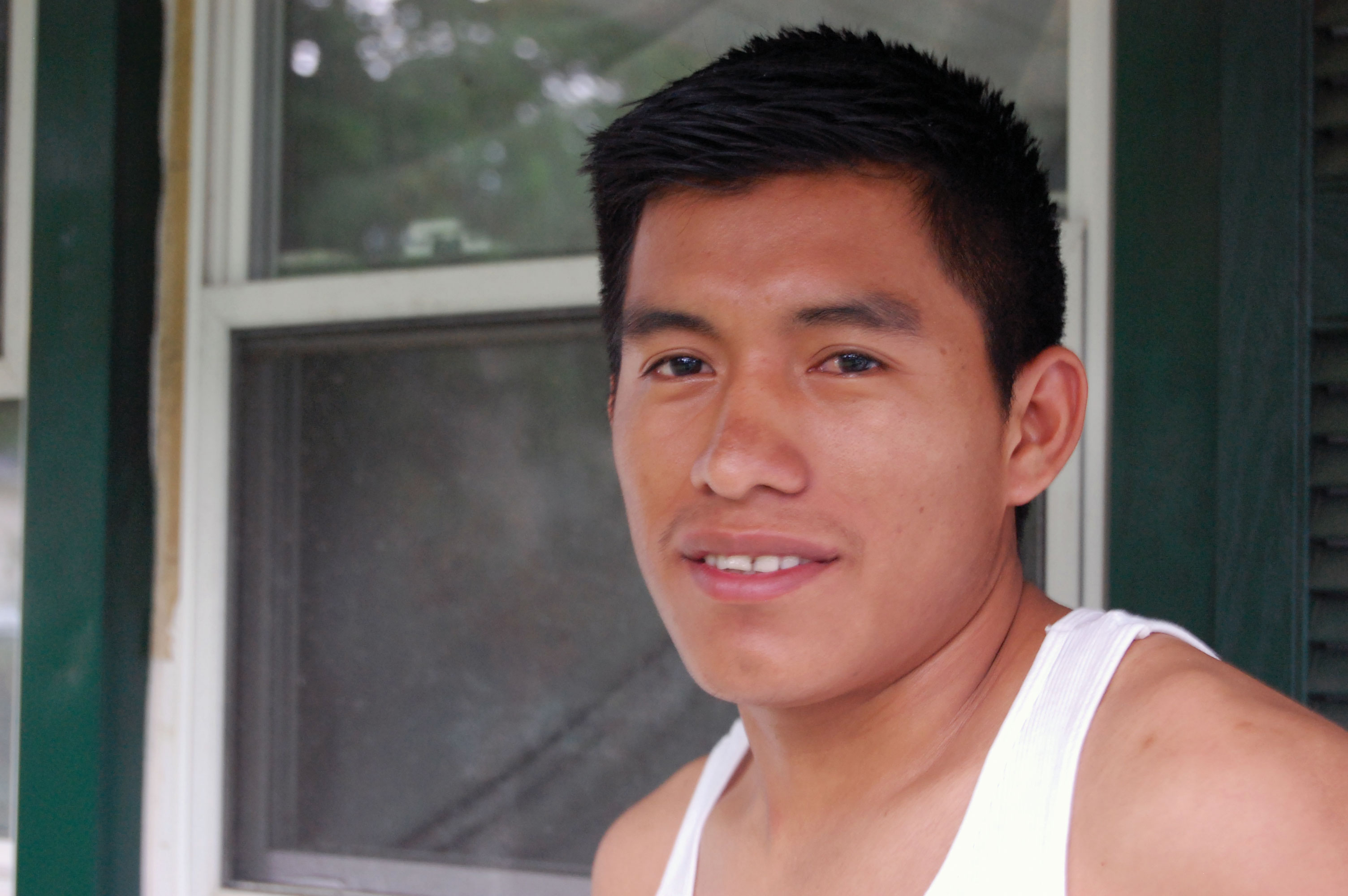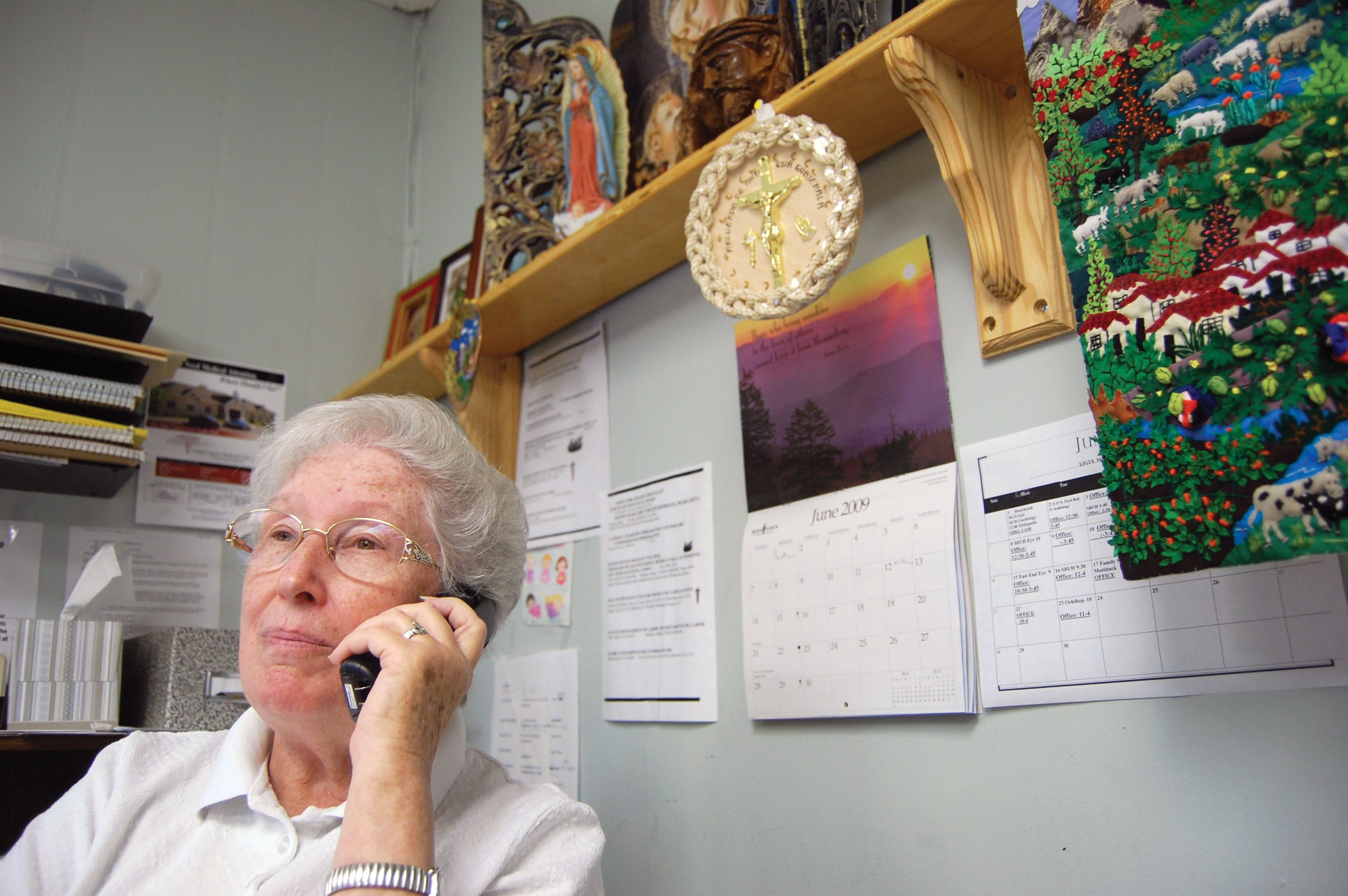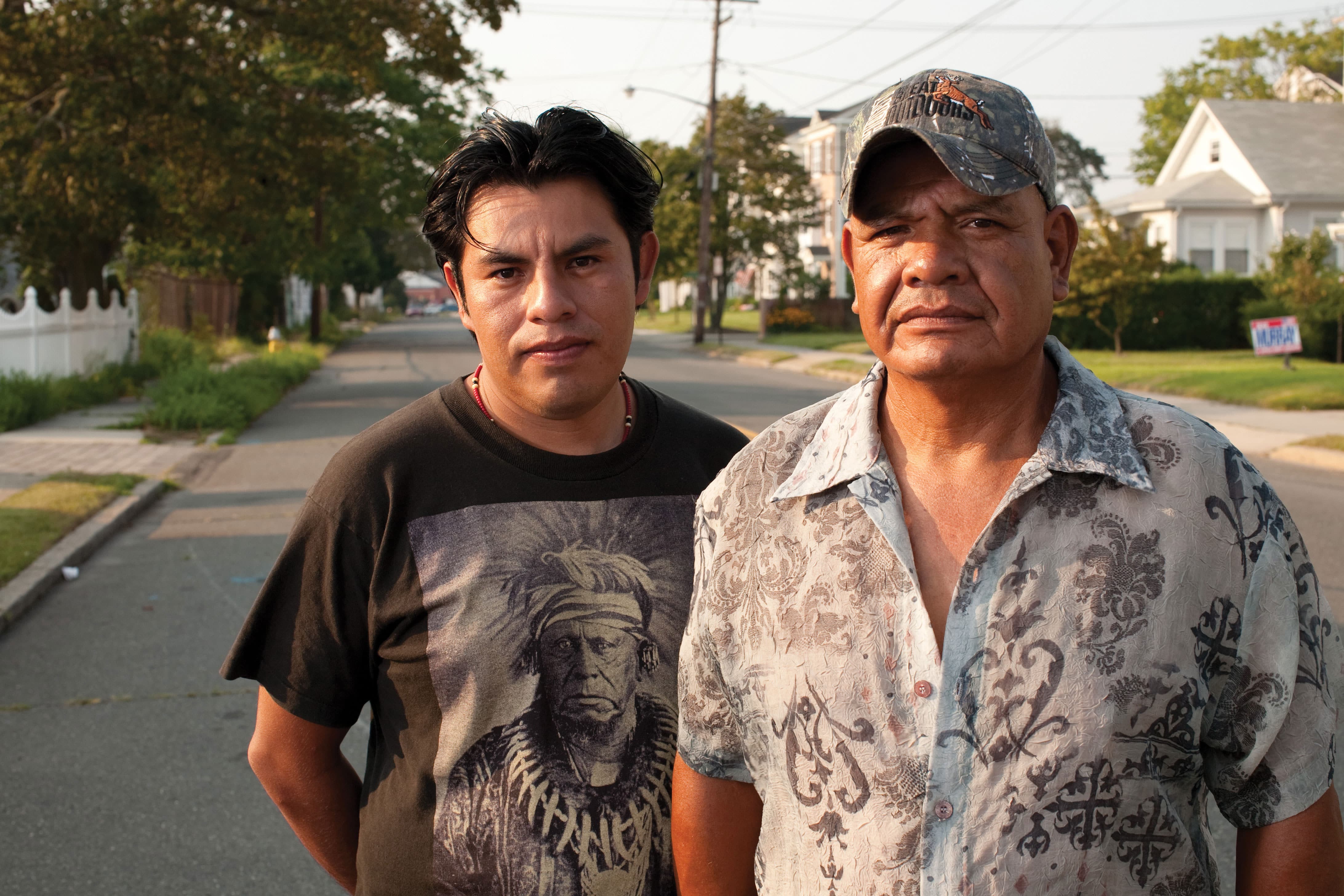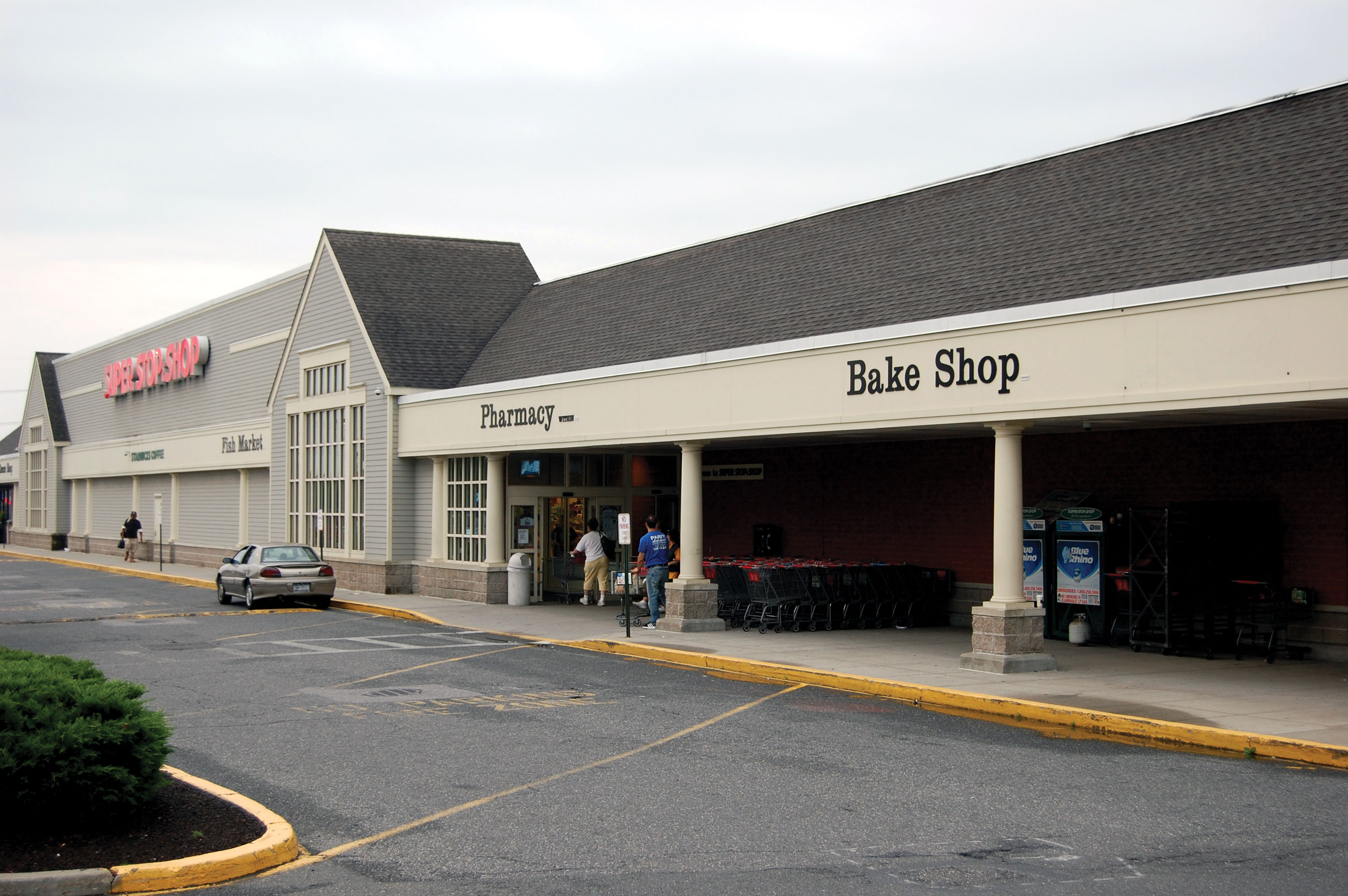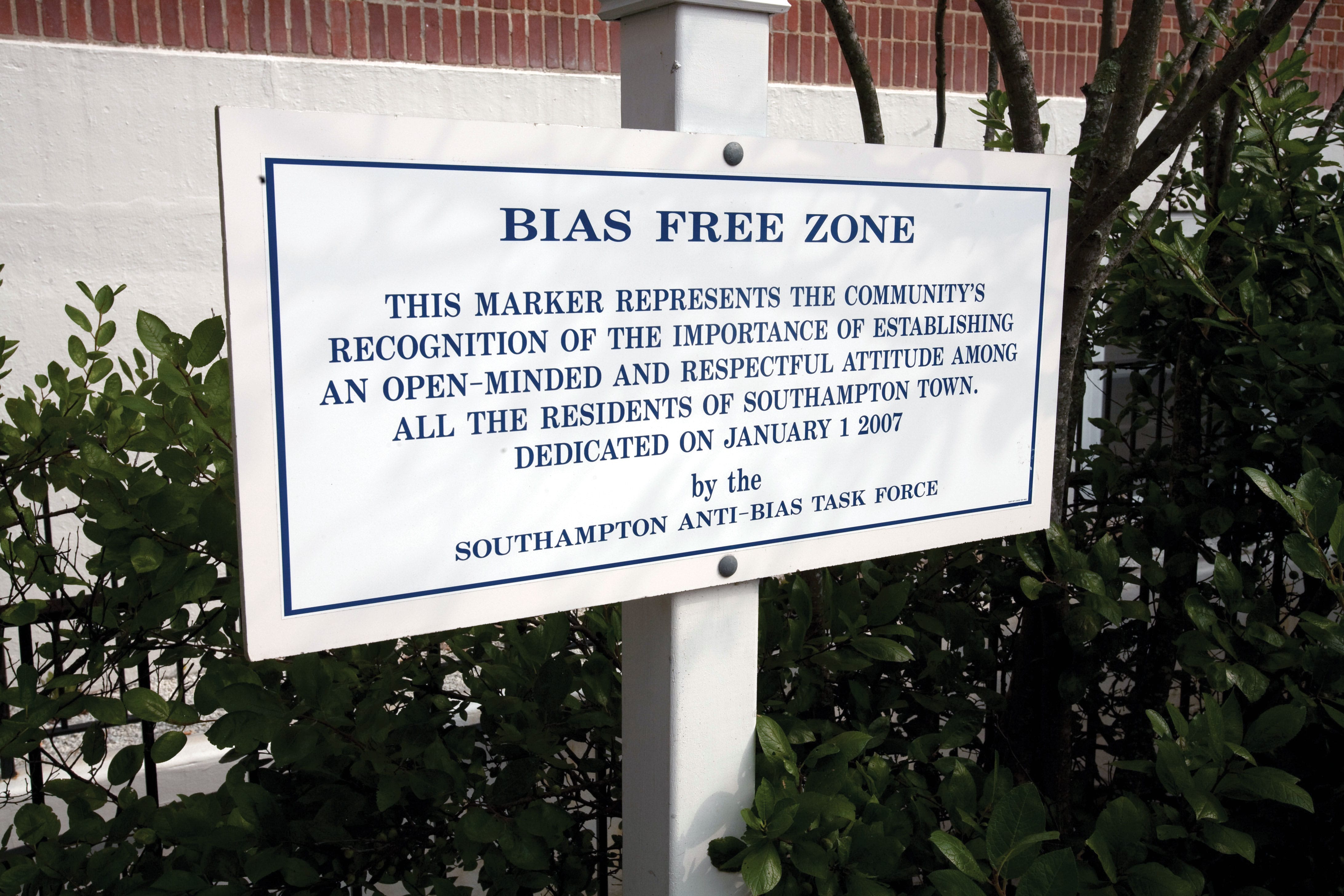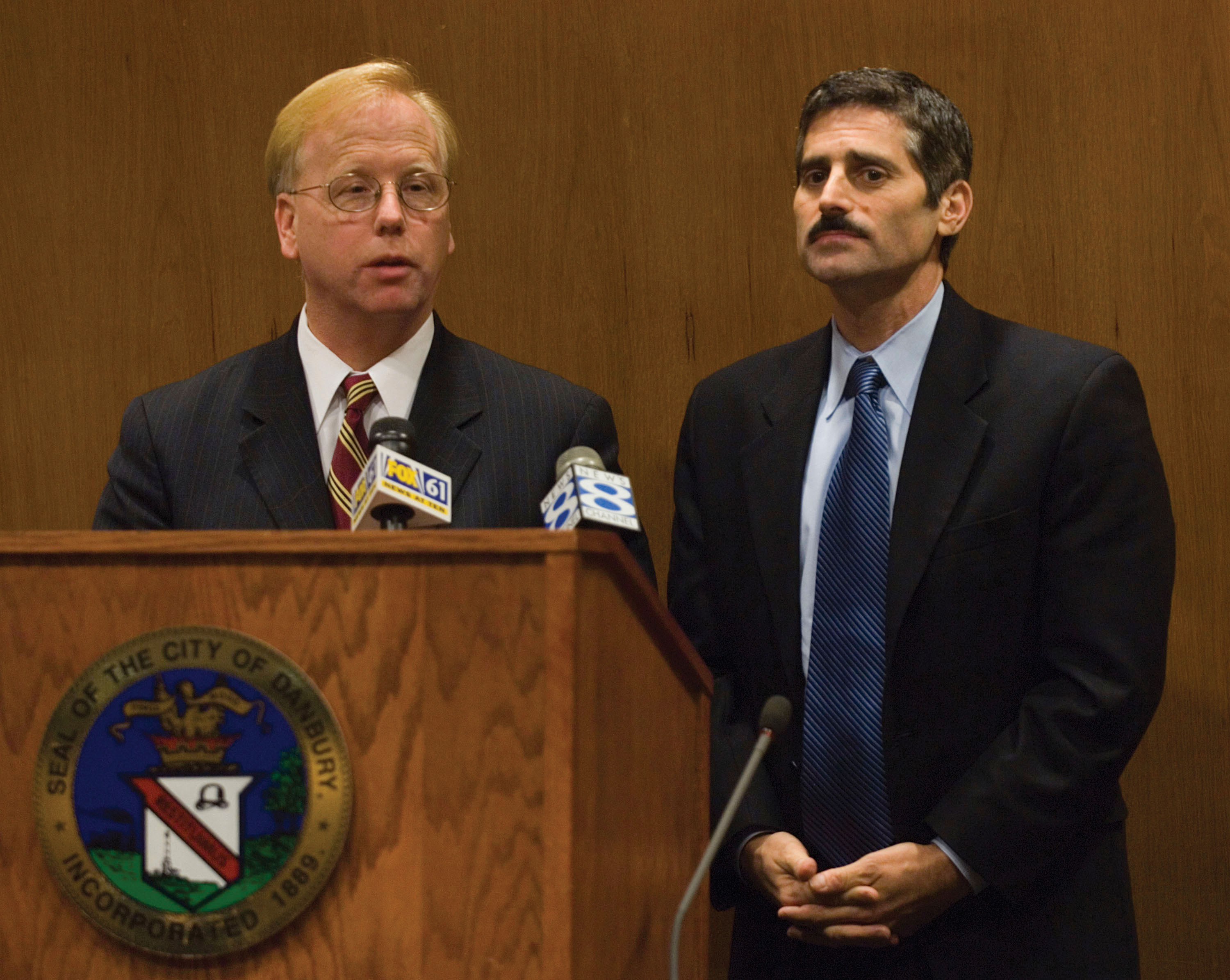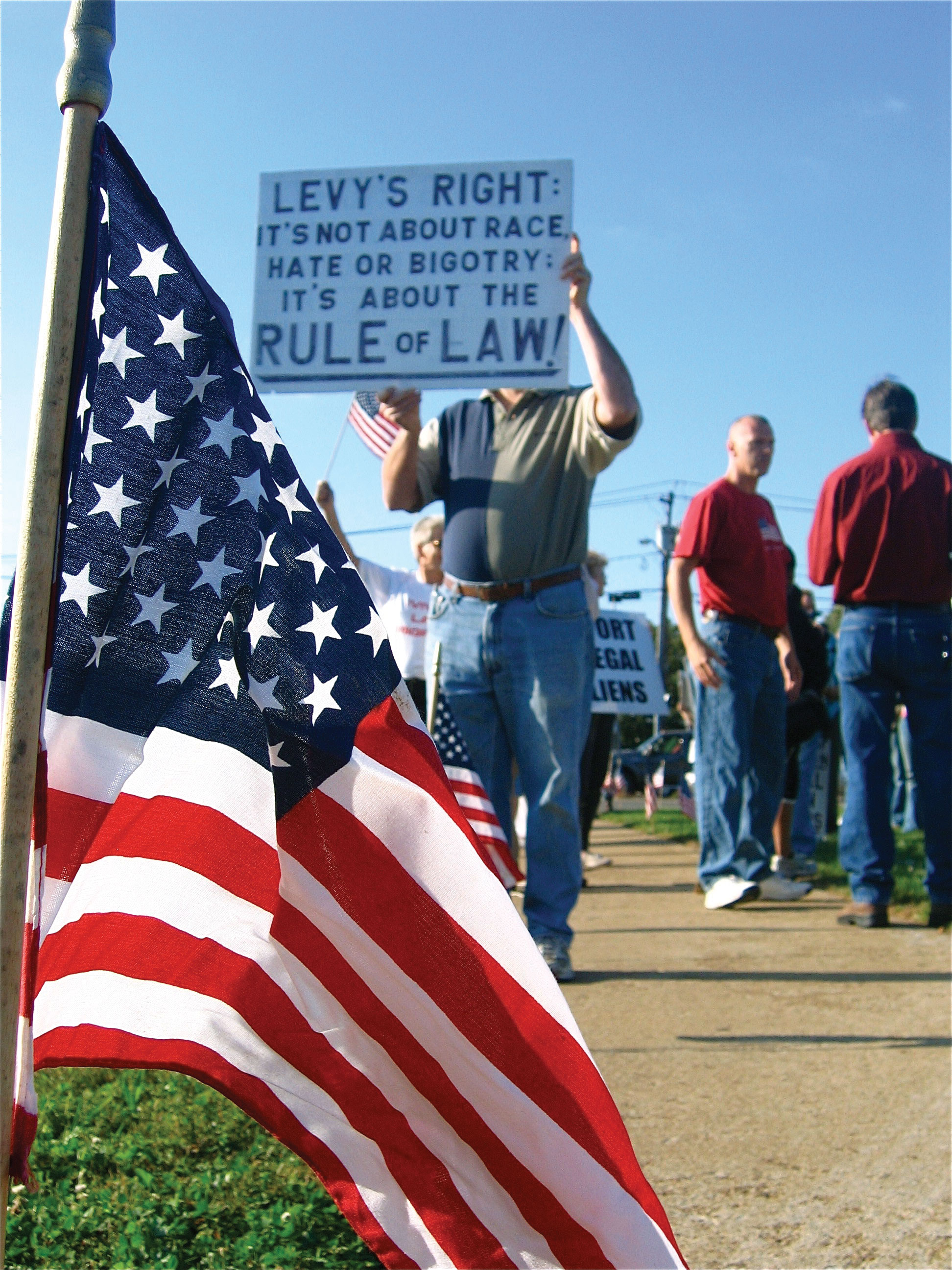Climate of Fear: Latino Immigrants in Suffolk County, N.Y.
This study reveals how Latino immigrants in Suffolk County, N.Y., are routinely the target of violent attacks, harassment and abuse driven by a virulent anti-immigrant climate that has been fostered by community leaders and law enforcement practices.
Less than one year ago, on Nov. 8, 2008, Marcelo Lucero, an Ecuadorian immigrant, was murdered in the town of Patchogue, N.Y. The killing, police say, was carried out by a gang of teenagers who called themselves the Caucasian Crew and targeted Latino residents as part of a sport they termed "beaner-hopping." It highlighted a growing national problem — violent hatred directed at all suspected undocumented immigrants, Latinos in particular. Officials in Suffolk County, N.Y., where Patchogue is located, minimized the tragedy, with the county executive even suggesting that it would have been a mere "one-day story" if not for earlier publicity about his and other residents' anti-immigrant activism over the prior decade.
But the reality was that nativist intolerance and hate violence had been festering for years in Suffolk County, fostered by some of the very same officials who were now wishing the story away. The situation in Suffolk County, in fact, is a microcosm of a problem facing the entire United States, where FBI statistics suggest a 40% rise in anti-Latino hate crimes between 2003 and 2007, the latest numbers available. The number of hate groups in America has been rising, too, climbing more than 50% since 2000, mainly by exploiting the issue of undocumented non-white immigration.
In the aftermath of the Lucero murder, the Southern Poverty Law Center (SPLC) sent a Spanish-speaking researcher to Suffolk County to interview Latino residents, both documented and undocumented, over a period of months. What SPLC found was frightening. The Lucero murder, while the worst of the violence so far, was hardly an isolated incident. Latino immigrants in Suffolk County are regularly harassed, taunted, and pelted with objects hurled from cars. They are frequently run off the road while riding bicycles, and many report being beaten with baseball bats and other objects. Others have been shot with BB guns or pepper-sprayed. Most will not walk alone after dark; parents often refuse to let their children play outside. A few have been the targets of arson attacks and worse. Adding to immigrants' fears is the furious rhetoric of groups like the now-defunct Sachem Quality of Life, whose long-time spokesman regularly referred to immigrants as "terrorists." The leader of another nativist group, this one based in California, was one of many adding their vitriol, describing a "frightening" visit to an area where Latinos are concentrated in Suffolk: "They urinate, they defecate, [they] make sexual overtures to women."
Fueling the fire are many of the very people who are charged with protecting the residents of Suffolk County — local politicians and law enforcement officials. At one point, one county legislator said that if he saw an influx of Latino day laborers in his town, "we'll be out with baseball bats." Another said that if Latino workers were to gather in a local neighborhood, "I would load my gun and start shooting, period." A third publicly warned undocumented residents that they "better beware." County Executive Steve Levy, the highest-ranking official in Suffolk, is no friend of immigrants, either. When criticized by a group of immigrant advocates, for example, Levy called the organization a den of "Communists" and "anarchists." At the same time, immigrants told the SPLC that the police were, at best, indifferent to their reports of harassment, and, at worst, contributors to it. Many said police did not take their reports of attacks seriously, often blaming the victim instead. They said they are regularly subjected to racial profiling while driving and often to illegal searches and seizures. They said there's little point in going to the police, who are often not interested in their plight and instead demand to know their immigration status.
Although Suffolk County is not unique — many communities across the United States are undergoing similar racial conflicts and rapid demographic changes — there are several concrete measures county officials could take to remedy what has been a worsening problem there for a decade:
• First, local politicians should halt their angry demagoguery on the issue of immigration. There is abundant evidence that Suffolk County officials have contributed substantially to an atmosphere conducive to racial violence.
• Second, the county and state legislatures should mandate that crime victims and witnesses not be asked their immigration status during criminal investigations. As long as they are, immigrants will be unwilling to come out of the shadows to report crimes against themselves and others.
• Third, law enforcement officials should train officers to ensure that they take seriously cases of hate-motivated crime. Until they do, Latino residents will continue to distrust law enforcement officials and avoid cooperation.
• Fourth, the county should maintain accurate hate crime statistics that are readily available to the public. Doing so will help guide county leaders and residents in confronting the problem of hate-motivated violence.
• Fifth, the county should promote educational programs in the public schools to encourage respect for diversity and opposition to hatred. In the end, educating the next generation is the only permanent antidote to hate.
If these measures are taken to combat an increasingly volatile situation, it's likely that angry passions in Suffolk can be cooled and a rational debate on immigration and its consequences begun. The alternative is that the county continues to foster a dangerous growth of violent racial intolerance and nativism — a climate of fear.
Mark Potok is the director of the Intelligence Project of the Southern Poverty Law Center, which produced this report.
Sarah Reynolds was the lead researcher for this report, conducting interviews and research in Suffolk County, N.Y. David Holthouse was the principal author. Other staffers of the Southern Poverty Law Center (SPLC) who contributed include project manager Heidi Beirich, design director Russell Estes, designer Valerie Downes, copy editor Melissa Henninger and researcher Janet Smith. Photographs were taken by Lowell Handler, Carlos Morales and Sarah Reynolds. The report was edited by Mark Potok and Rob Waters of the SPLC, along with contributing editor Henry Fernandez, a senior fellow at the Center for American Progress.
Special thanks to the Hagedorn Foundation for its generous support of this project. Thanks also to the Center for American Progress.
Suffolk County, N.Y. — The night of Nov. 8, 2008, seven teenage males gathered in a park in Medford, N.Y., to drink beer and plot another round of a brutal pastime they called beaner-hopping. It consisted of randomly targeting Latino immigrants for harassment and physical attacks.
Five days earlier, three of them had gone on the hunt and beaten a Latino man unconscious, they later told police. "I don't go out and do this very often, maybe once a week," one of them said.
Two of the youths in the park had started their day just after dawn by firing a BB gun at Latino immigrant Marlon García, who was standing in his driveway. García was hit several times.
After leaving the park, the pack of seven drove around Medford. Unable to locate a victim, they set off for Patchogue, a nearby seaside village. Both communities are in Suffolk County, which occupies the eastern, less urban half of Long Island. In Patchogue, they caught sight of Hector Sierra walking downtown. They ran up to Sierra and began to punch him, but Sierra was able to flee.
Then, just before midnight, according to prosecutors, they spotted Ecuadorian immigrant Marcelo Lucero walking with a friend, Angel Loja. Lucero, 37, had come to the United States in 1992. He worked at a dry cleaning store and regularly wired money home to his ailing mother.
The seven teenagers jumped out of their vehicles and began taunting the two men with racial slurs. Loja fled, but the attackers surrounded Lucero and began punching him in the face. Trying to defend himself, Lucero removed his belt and swung it, striking one of the teens in the head. Enraged by that blow, 17-year-old Jeffrey Conroy, a star high school football and lacrosse player, allegedly pulled a knife, charged forward and stabbed Lucero in the chest, killing him.
All seven attackers were arrested a short time later. Conroy was charged with second-degree murder and manslaughter as a hate crime. The other six were charged with multiple counts of gang assault and hate crimes.
The local and national media gave the murder of Lucero extensive coverage. This was in part because it occurred less than four months after the highly publicized slaying of a Mexican immigrant in Shenandoah, Pa. Luis Ramírez, 25, was beaten to death by drunken high school football players in a case that sparked a national discussion and heightened awareness of the rising tide of anti-immigrant violence.
In few places is that trend more viciously evident than in Suffolk County, where anti-immigrant sentiment has long run deep, and where a fast-growing Latino immigrant population has been victimized by a continuing epidemic of anti-immigrant hate crimes since the late 1990s.
In recent months, Southern Poverty Law Center (SPLC) researchers interviewed more than 70 Latino immigrants living in Suffolk County, along with more than 30 local religious leaders, human rights activists, community organizers and small business owners. Their accounts are remarkably consistent and demonstrate that although Lucero's murder represented the apex of anti-immigrant violence in Suffolk County to date, it was hardly an isolated incident.
Latino immigrants in Suffolk County live in fear. Low-level harassment is common. They are regularly taunted, spit upon and pelted with apples, full soda cans, beer bottles and other projectiles. Their houses and apartments are egged, spray-painted with racial epithets and riddled with bullets in drive-by shootings. Violence is a constant threat. Numerous immigrants reported being shot with BB or pellet guns, or hit in the eyes with pepper spray. Others said they'd been run off the road by cars while riding bicycles, or chased into the woods by drivers while traveling on foot. The SPLC recorded abundant first-hand accounts of immigrants being punched and kicked by random attackers, beaten with baseball bats or robbed at knifepoint.
Political leaders in the county have done little to discourage the hatred, and some have actively fanned the flames. County Executive Steve Levy, Suffolk's top elected official, has made hostile policies targeting undocumented immigrants a central theme of his administration since he was first elected in 2003. Others have done worse, with public statements that all but endorsed violence. At a public hearing on immigration in August 2001, County Legislator Michael D'Andre of Smithtown said that if his own town should ever experience an influx of Latino day laborers like that of nearby communities, "We'll be up in arms; we'll be out with baseball bats." In March 2007, County Legislator Elie Mystal of Amityville said of Latino immigrants waiting for work on street corners, "If I'm living in a neighborhood and people are gathering like that, I would load my gun and start shooting, period. Nobody will say it, but I'm going to say it."
Most immigrants said they do not dare travel alone at night. Few let their children play outside unattended.
"We live with the fear that if we leave our houses, something will happen," said Luis, a Mexican who migrated to Suffolk County three years ago. "It's like we're psychologically traumatized from what happens here."
Like all but two immigrants contacted by the SPLC, Luis spoke for this report on the condition that, to avoid retaliation, he would be identified only by his first name and country of origin.
At best, the immigrants said, the police seem indifferent to their plight. At worst, the police contribute to it, in the form of racial profiling, selective enforcement and outright bullying. A detailed account provided by Agosto, a Guatemalan immigrant, was typical. Agosto said that in early 2008, he was waiting for work at la placita (little plaza), a day labor pick-up point in Brentwood, when a police car pulled up. The two officers inside told him he wasn't allowed to stand there and demanded to see his identification. When he replied that he didn't have his I.D. with him, the officers told him to get in the back of the squad car. "I thought they were giving me a ride home," he said. But when they arrived at his residence, the police officers got out of the car and told Agosto to find his I.D. When he unlocked the front door, he said, the officers barged in without asking permission to enter. The police ransacked his living quarters, rifling through drawers and knocking items off shelves.
"I was very nervous," Agosto said. "They kept pushing me and telling me to hurry up. I got even more nervous so it took me awhile to find my I.D. When you are undocumented, you get scared." When Agosto finally located his cédula de identidad, a Guatemalan government-issued I.D. card, the police looked it over then left. "I felt bad, like they were treating me like I was less than they were," he said. "It felt racist."
No immigrants reported serious physical abuse at the hands of Suffolk County law enforcement authorities. But time after time, they gave similar accounts of being pulled over for minor traffic violations and then interrogated, or being questioned harshly at nighttime checkpoints after watching Anglo drivers being waved through. A few said they'd been arrested for driving under the influence or for refusing to take a breathalyzer test even though in fact they'd submitted to the test and registered well below the legal limit.
Evidence suggesting unequal enforcement of the motor vehicle code in Suffolk County is easily observed in the local courts that handle minor offenses.
Latinos account for roughly 14% of Suffolk County's population, but on a typical day in a Suffolk County justice court, they make up nearly half the defendants appearing for motor vehicle violations. A review of the police blotters printed in Suffolk County daily newspapers yields similarly suggestive demographic evidence: almost every day, around 50% of the drivers listed as having been fined for a motor vehicle violation have Latino surnames.
The most common violation that Latino immigrants are tagged with is violation 509, for unlicensed driving. It carries a $185 fine on top of a $150 vehicle impound charge and $25 a day for vehicle storage. Failure to appear in court or to pay a fine leads to arrest warrants.
Law enforcement officers in Suffolk County tend not to exhibit the same enthusiasm for investigating hate crimes against Latinos as they do writing them tickets, according to immigrants and other county residents interviewed for this report.
Immigrants in Suffolk County don't trust the police. They say there's no point in reporting bias-motivated harassment, threats or assaults, even severe beatings, because from what they can tell, the police take the report and then do nothing. They say that when the police arrive on the scene of a hate crime, they often accept the version of events given by the assailant or assailants, even to the point of arresting the true victim in response to false claims that the immigrant started a fight. And they say that officers discourage hate crime victims from making formal complaints by questioning them about their immigration status.
In the days following the murder of Marcelo Lucero, the Congregational Church of Patchogue invited immigrants to the church to speak about hate crimes. In all, more than 30 Latino immigrants in Suffolk County came forward with detailed accounts of their own victimization. In response, the Suffolk County Legislature formed a task force to investigate the sources of racial tension in the county.
To date, the task force has held one of at least four planned hearings.
Prosecutors, meanwhile, have announced new indictments that accuse the defendants in the Lucero murder of assaulting or menacing a total of eight other Latino immigrants.
On June 24, 2008, according to prosecutors, the teenagers set upon Robert Zumba, kicking him and pinning his arms while Conroy, the alleged knife-wielder in the Lucero slaying, sliced Zumba with a blade. Members of the group repeatedly victimized another man, José Hernández, in December 2007, prosecutors said. During one attack, Conroy allegedly held a pipe in one hand and smacked it against his opposite palm, threatening, "We're going to kill you."
Immigrants who have been the victims of hate-crime violence in Suffolk County report that in most cases the attackers are white males in their teens or 20s. A few reported being attacked by African-American males, or being lured by a white female to a nearby "party" where assailants lay in wait. Almost always, the reported attackers were young.
All seven youths accused of participating in the attack on Lucero reside in Patchogue or Medford — predominantly middle-class towns whose strip malls and pizzerias appear in sharp contrast to the lavish wealth on display elsewhere in the county. Suffolk County has one of the steepest wealth gradients in the country. Six of its ZIP codes are among the 100 wealthiest in the United States. The village of Sagaponack, one of a group of seaside communities collectively known as the Hamptons, is the most expensive ZIP code in the nation, with a median home sale price in 2005 of $2.8 million. It's home to investment bankers and real estate tycoons.
The parents of the alleged Lucero attackers include a teacher, a butcher, a store clerk, a deli owner and a former K-Mart operations manager. Latino immigrants may find work in Suffolk County's rich seaside communities, but they live in the more affordable inland towns, alongside middle- and working-class American families who are more likely to view the brown-skinned newcomers as competitors for jobs than hired help.
Immigrant advocates say that the violence committed by high school students and their slightly older peers is fueled by the immigrant-bashing rhetoric they absorb in the hallways and classrooms at school, in the news media, or in conversations at home.
Demographic change in Suffolk County has been rapid over the previous two decades. Some towns have gone from being practically all white to having a 15% Latino population, made up mostly of immigrants from Central America and Mexico, according to the latest census statistics. In Patchogue and Medford, the Latino population is 24%.
Although this influx has slowed since the U.S. economy faltered last year, the nativist backlash continues. It began in earnest in the late 1990s, when about 1,500 Mexican workers showed up over the course of a few years in the small, majority-white, middle-class hamlet of Farmingville. The hamlet's central location made it ideal for contractors looking to hire day laborers for jobs throughout the county. That in turn made it attractive to immigrants drawn to the area by then-abundant employment opportunities in the landscaping, restaurant, and construction industries.
In 1998, a militant nativist group called Sachem Quality of Life formed in Farmingville and began disseminating propaganda that accused undocumented Latino immigrants of being inherently prone to rape, armed robbery and other violent crimes. Although Sachem Quality of Life is now defunct, the group, along with the Federation for American Immigration Reform and a smaller nativist group called American Patrol, heavily influenced the tone for public discourse on immigration in the area.
Nativist ideology now permeates many levels of society and government in Suffolk County. County Executive Levy in June 2006 mocked activists demonstrating against hate crime violence and the mass eviction of Latino immigrants based on the selective enforcement of zoning laws. "I will not back down to this one percent lunatic fringe," he said. "They evidently do not like me much because I am one of the few officials who are not intimidated by their politically correct histrionics."
That same year, a school board member in the Hamptons distributed an online petition to parents, teachers, and a school principal calling for undocumented immigrants to be prevented from receiving any "free services" in the U.S. "Look, we need you to continue sending this around. ... [G]et as many viable names on here so that someone hears our voices," the E-mail read. "It seems the only voices they hear are the illegal immigrants who say 'foul play,' or the agencies backing them. We need to stop this and stop it in the bud!"
Also in 2006, the same official distributed an E-mail containing a "hilarious" mock description of a doll called Brentwood Barbie. "This Spanish-speaking only Barbie comes with a 1984 Toyota with expired temporary plates & 4 baby Barbies in the backseat (no car seats)," it read. "The optional Ken doll comes with a paint bucket lunch pail & is missing 3 fingers on his left hand. Green cards are not available for Brentwood Barbie or Ken."
In a February 2007 public hearing on proposed legislation, County Legislator Jack Eddington of Brookhaven singled out two immigration advocates who were speaking from the podium in Spanish and demanded to know if they were in the country legally. Eddington also warned undocumented immigrants, "You better beware" and "Suffolk County residents will not be victimized anymore."
Later in 2007, Levy was reelected with 96% of the vote.
Over the years, immigrant advocates have built an energetic movement in Suffolk County. Earlier this year, on the six-month anniversary of Lucero's murder, the Long Island Immigrant Alliance and The Workplace Project organized a vigil at the site of the killing. The event featured speakers from an array of groups, including the Fundación Lucero de América (Lucero Foundation America), along with Marcelo Lucero's brother, Joselo.
A few months before the vigil, some residents of eastern Long Island formed Neighbors in Support of Immigrants, in part to counter what they perceived as a takeover of local town council and community meetings by anti-immigrant zealots. In Patchogue, residents formed the Unity Coalition with the help of the New York Division of Human Rights to work to ease tensions in that community. A more established grassroots organization, Farmingdale Citizens for Viable Solutions, runs La Casa Comunal, a community center that serves Latino day laborers. The group also documents hate crimes.
Immigrant advocates cheered the news earlier this year that the Department of Justice had begun a criminal investigation into hate crimes against Latinos in Suffolk County. The federal agency also launched a probe into the way the Suffolk County Police Department, the main law enforcement agency in the county, has handled such crimes.
Nevertheless, the Latino immigrants interviewed for this report expressed little optimism that attitudes will change. If anything, they said, their situation is growing more perilous by the day. The weak economy means that more residents are out of work and looking for someone to blame. And many of the jobs for immigrants have dried up, forcing day laborers to spend more time traveling to and from their residence or waiting for work on street corners, making them all the more vulnerable.
Although most of the Latino immigrants who are victimized in Suffolk County are undocumented, their attackers have no way of knowing their immigration status. "They don't know if I'm legal or not so it must be because we're [Latino]," said Orlando, a Guatemalan immigrant who came to Suffolk County in 2005. "The racist people aren't going to change just because we get papers."
Immigrant-bashing in Suffolk County, N.Y., dates back at least a decade to the founding of Sachem Quality of Life (SQL), a trendsetting anti-immigrant group whose militant tactics inspired later nativist extremist groups like the Minutemen and Save Our State.
SQL took its name from a Long Island school district. Most of its members lived in Farmingville, a small hamlet of 15,000 residents that, like much of Suffolk County, experienced an influx of Latino immigrants beginning in the mid-to-late 1990s.
After forming in 1998, Sachem began a generalized campaign to rid Farmingville of Latino immigrants. The efforts included harassment and verbal abuse of laborers and contractors at day-labor pickup sites. Members called for the U.S. military to occupy Farmingville so that soldiers could assist in rounding up immigrants for mass deportation. SQL spread defamatory anti-immigrant propaganda laden with bogus data purporting to show that Latino immigrants were responsible for a nonexistent rise in sexual assault, burglary, manslaughter and other serious crimes in the area.
The group worked to thwart the establishment of a day laborer hiring center that was authorized by the Suffolk County Legislature but ultimately vetoed by then-County Executive Bob Gaffney. Its ranks swelled to 400 members after the powerful Federation for American Immigration Reform, a national anti-immigrant hate group based in Washington, D.C., dispatched a field organizer to assist SQL's recruiting, street actions, and propaganda campaign. SQL referred to Latino immigrants as "invaders," and branded any American who advocated for immigrant rights a traitor to the country.
As SQL's influence grew, racial tensions ratcheted up. Incidents of verbal harassment and violence multiplied. They included rocks and bottles being thrown at Latino immigrants; BB gun snipers firing at Latinos from rooftops and passing cars; vandalism and window-breaking at houses and apartment complexes where immigrants lived, and Latinos being accosted on the street by groups of white youths.
In September 2000, two local racist skinheads posed as homebuilding contractors to lure two Mexican day laborers to a warehouse where the white supremacists stabbed and nearly beat the immigrants to death. One of the assailants was tattooed with swastikas. The other had a tattoo on his stomach of a skinhead menacing a kneeling Jew.
Shortly after the skinheads were arrested for attempted murder as a hate crime, Paul Tonna, a moderate Republican and presiding officer of the Suffolk County Legislature, helped organize a rally for racial unity in Farmingville. In response, SQL held a rally outside Tonna's home. Picketers hurled racial slurs at his adopted children, four of whom are Mexican-American and one a Native American.
Two weeks after the attack, SQL held a "Day of Truth" forum that featured guest speakers from several hate groups, including Glenn Spencer, head of California-based American Patrol.
At the forum, SQL President Margaret Bianculli-Dyber said that she was inspired to form the group one spring day when she witnessed "hundreds" of Latino men loitering on a corner outside her house. "I called the police. I said, 'There are hundreds of men standing on the corner. Send a patrol car.' They said, 'You mean the Mexicans waiting for work? We're not sending a car. You're a racist.'"
Also at the Day of Truth, SQL member Dave Drew said his group's ultimate goal was the deportation of all undocumented immigrants. "Some say, 'There are millions of illegal aliens. That's a big job to deport.' Is it really? How many planes and cars are on the road as we speak? Not that big a deal to deport a couple million people. Farmingville is a one-day job, that's Farmingville! If the INS [U.S. Immigration and Naturalization Service] wanted to do it, they'd come in the morning with buses, with document people, and remove them all, repatriate them. One-day job. Farmingville would be restored."
A few days after the forum, a member of SQL was arrested for threatening a local immigrant family. The targeting of Latinos in Suffolk County has continued since. On July 5, 2003, when SQL was still active, five teenagers used firecrackers to set fire to the Farmingville home of a family of five Mexican immigrants. The family narrowly escaped death as flames melted the house's aluminum siding and kept spreading, scorching the trees outside. After speaking with the teenagers, the local district attorney reported that they showed no remorse over burning down the house, for the simple reason that "Mexicans live there."
In 2004, SQL divided into competing factions and gradually disintegrated. It's now defunct. But its hateful legacy remains.
Suffolk County, N.Y. — Orlando, a 23-year-old immigrant from Guatemala, arrived in Suffolk County in 2005. He earns $11 an hour building tennis courts "for rich people," he says. He lives in a tiny rented room in Riverhead that he shares with his pet guinea pig, Sarita María. It contains his bed, a small television and Sarita María's cage. On top of the cage, Orlando's toothpaste, toothbrush and dental floss are lined up in a neat row on a folded towel. The room is immaculate.
Orlando moved to this tiny room after a white neighbor assaulted him outside his previous residence on Oct. 3, 2008. Orlando was celebrating his birthday with a group of friends around a barbecue. Around 10 p.m., he recalls, the man who lived down the street came over to complain about the music and the smoke from the grill.
Here is Orlando's account, related to an investigator for the Southern Poverty Law Center (SPLC) in Spanish, of what happened next:
The man was drunk, and he came to cause trouble. One of my friends went to talk with him so there would not be any problems but [the neighbor] started to offend us, saying we were immigrants and we should not be in America, because we were stealing work from Americans, a lot of things like that. One of my friends tried to hold him back, and [the neighbor] hit him in the head with a flashlight. My friend's head opened up in a wound. I went to try and help him and [the neighbor] then hit my head as well. Then he ran.
The police came, and he did not want to come out of his house. He said that we had started it. He lied. He said that we were looking for trouble and we would not let people sleep. Even the neighbors in the house right next to us supported this man and said it was our fault.
Orlando said the police asked him if he wanted to file charges and he said no because he did not want to cause any trouble.
There is a lot of discrimination [in Suffolk County]. They say, excuse the word, "Fucking immigrant, you should return to your country, you're just here to rob us." But we're the ones getting beaten and robbed, and the police do nothing. There are many Latinos here that work more than Americans, but there are a lot of Americans here that treat Latinos like garbage. Like we are worth nothing.
Because these Americans know that Hispanic people stay quiet, they make fun of us, they attack us, they steal from us, and they get away with it.
The great majority of Latino victims of hate crimes interviewed for this report said they were too fearful of retribution — from their assailants, local authorities or both — to speak without assurances that they would be identified only by first name and country of origin.
Carlos Morales, a Latino immigrant community organizer in Suffolk County, was one of only two victims who agreed to give their full names. Morales, 30, came from Mexico City in 1998. When he first arrived, he was homeless. He slept outside in cardboard boxes, often behind a church in Farmingville. In 1999, when the immigrant-bashing organization Sachem Quality of Life was at the height of its power, Morales was run over by a car and beaten in one of the area's first anti-immigrant attacks.
Here is how he tells his story:
The laundromat where I worked closed at 10:30, and around 11 at night, I was riding home on my bike. I was crossing the street and there was a car coming. First, they stopped for me to cross the street, and then, when I am crossing, they ran me over. When I fell on the ground, they got out of the car and kicked me. They took baseball bats out of the back of their car. They hit me on my knees, in the face, on my back. One of them put his foot on my mouth and said, "You should go back to where you come from, you dirty Mexican." And he continued to hit me.
There is a bar nearby, and the people at the bar heard the noise and came running out. The [attackers] got in their car and drove away. They left me in a bad state — on the ground, really beaten. The people that came out of the bar called the police and the ambulance came and got me.
I remember when I was in the ambulance, the [paramedic] who was putting the sheet on me, he said to me: "This happened to you because you are here. If you were not here, this would not have happened." He said it in a sarcastic way because he did not like that I was a Mexican. I remember his face because he was laughing at me. It is something I will never forget because I could not say anything. I was hurt, and he was the one with the ambulance. When I was learning English, I could understand a lot of things but I couldn't speak well, I couldn't say what I really wanted to say.
The ambulance brought me to the hospital. I was there with a dislocated shoulder and fractured knees, both knees fractured. I still have knee problems. When it is really cold, I have a lot of pain in my knees. Also, I lost my two front teeth when they hit me in the mouth with a baseball bat.
That was my first experience of racial hate. I had heard of other attacks. I knew people who had been attacked but I didn't think it would happen to me, especially not in this way. I had experienced other incidents, like customers in the laundromat giving me looks where you know you're not welcome. But I never thought it would reach this level, that people could have so much hate, to beat you so much, so hard.
No one was ever arrested.
In the beginning, it affected me in a negative way because I felt a lot of anger. I started to feel like all Americans are bad people. You cannot trust them. It changed the way I was. I was always ready to fight. I turned into a very defensive person with other people. I was like that for about two years, I think, really angry with people, always thinking to do the same to other people that they had done to me. But after two years, I started working in the community, and I began to get better. Now, whenever I am walking or riding my bike, I always try to stay alert and see if there are witnesses around or not.
I try to convince people who are attacked to come forward with their own stories, but it's hard to bring them out. The majority of people don't tell these stories outside of the [immigrant] community. Inside the community, you hear the new stories that are happening almost every day, constantly, in one form or another. For someone that does not know what it's like for us, they would think that all the stories were invented, but these are the things that happen to people every day.
Here are the accounts of four other Latino victims of violence in Suffolk County, in their own words:
David (from Peru): There's one house I walked by and someone was standing at the front door. He was saying, "Hey," and started throwing rocks at me. He pointed up to the top floor where a man was leaning out the window with a rifle pointed at me.
David and his brother also reported being menaced by black youths armed with chains and samurai swords who made anti-immigrant comments, and working at a factory where the manager regularly shoves immigrant employees and uses racial epithets.
Diego (Mexico): It was dusk a few weeks ago [mid-May 2009], and I was riding my bike through town. A car pulled over and a few kids got out and started shooting me with rubber pellet guns from about 10 feet away. They shot me repeatedly. I held up my backpack to protect my face, and they stole my bike. I didn't report it or anything. It's not worth missing a day of work to go and report a crime when [the police] won't do anything about it. … During the day, we all feel better, safer, but at night I walk with two or three friends to be protected.
"Santos" (Mexico): I was driving through Brentwood April 11 [2009], and a car pulled out into the road and hit my car. Two [white] passengers got out and started yelling, "Stupid Mexican!" When I got out of my car to talk with them, they pushed and kicked me until the cops arrived. The police let them go even though I complained about their assaulting me. Two weeks later, I received a police report saying the accident was my fault. The report says nothing about them hitting me.
"Francisco" (Ecuador): One evening in the summer of 2006, I was leaving a deli when I was confronted by four kids, all about 16 years old. They said, "Fucking immigrant,"and told me to go back to Mexico." They grabbed me and threw me against the building. I fell down and they started kicking me and they left me there. It was around 5 p.m., still light outside. The police came and took a report but I never heard from them again. My shoulder was injured and cost me $1,200 in hospital bills. I paid the bills myself. Now, I never go outside alone.
An SPLC investigator also recorded the description by Aníbal, a 22-year-old immigrant from Mexico, of an attack by his former employer. This happened on Nov. 23, 2008, his medical records show. Aníbal says that when he showed up 30 minutes late for a flooring job, his boss started punching him as soon as he stepped out of his car at the job site, breaking his nose with the first blow. Here's what he says happened next:
My boss continued the attack. Then he said that if I went to the police, he would go to immigration and get me deported and also he would not pay me the $2,500 I was due, so I better shut up. I went to Sister Margaret [Smyth, a local nun and immigrant advocate], and she encouraged me to report what happened to the police and go to the hospital. So I did, even though I was afraid of being deported.
One week later, I went to the police station to get a copy of my report for my records. They said they couldn't just give me one, that I had to fill out an application, send it in, and I would have the report in about three months. I filled it out, but I have received nothing from the police. My hospital bills total about $4,800. I don't spend much time in the streets anymore. I'm afraid.
Javier Monroy, 56, is another immigrant who understands the twin pressures of constant fear and looming hospital bills. Early one morning in March 2008, Monroy was throwing a coffee cup into a garbage can outside a 24-hour pharmacy in Farmingville when a passing car pulled into the parking lot. He remembers hearing a door slam. Then something struck him in the head so hard it knocked him nearly unconscious. He says he fell to the ground and couldn't defend himself. He was hit at least 10 times, he says, by something harder than a fist -— most likely a chunk of wood or a metal pole, he thinks. The attackers stole his wallet and continued to beat him.
Bleeding heavily from a head wound, he was taken to a hospital, where he remained for five days, waiting to see if he needed surgery. It took eight staples to close his wound, and his badly bruised arm still hurts a lot in cold weather.
Monroy says he remembers giving a report to a police officer, but says nothing ever came of it. When he went to the hospital to have the staples removed, the hospital staff demanded that he pay $300 up front. He didn't have the money, so his cousin extracted them at home after soaking the staples in hot water and soap.
Last November, just after the murder of Marcelo Lucero, Monroy was invited to attend a gathering at a church in Patchogue with Father Dwight Wolter. He was invited into a room to speak with someone who introduced himself as a detective. Two other people were present, and all wore suits; Monroy thought maybe they were police or city employees but he wasn't sure — they did not identify themselves. He asked for names and business cards, and they said they had run out. They asked to hear his story, so he told them what happened when he was attacked. They asked a few questions and said they would call him back. Monroy has not heard from them since, or from the police. But he's hounded by collection agencies demanding payment of his hospital bills, which exceed $30,000.
When he lived in Mexico, Monroy recalls, he liked to watch police-glorifying reality shows from the United States, and he remembers being impressed by the police, especially by their eloquent squad-car soliloquies about how they'd joined the force to help regular people. He is disillusioned with the reality in Suffolk County.
Orlando, the Guatemalan immigrant, shares Monroy's disappointment with the apparent priorities of at least some Suffolk law enforcement officers.
For example, he says, one night in April 2008 he went to pick up his girlfriend, who's from the United States, to take her out to dinner. He parked his car just past her house, in front of another house, locked it and walked up to his girlfriend's residence. When they returned together a short time later, four police cars had surrounded his car, and officers were walking around. Orlando pressed the unlock button on his remote control as he approached the car, and the police officers, perhaps startled by the beep-beep sound of the alarm deactivating, reached for their guns, but did not pull them out of their holsters.
Orlando asked what was wrong in his limited English, but the officers shoved him against his car and patted him down. They demanded his license and registration. They said that someone had called in a report of a suspicious vehicle. Several times, they asked him how many times he'd driven through his girlfriend's neighborhood before parking. Just once, he kept saying. When they started asking him about where he worked and where he lived, his girlfriend yelled at them in fluent English to leave him alone, and they left.
Orlando says this kind of law enforcement interaction is typical for undocumented immigrants in Suffolk County, which is why they're reluctant to file charges or even report hate crime assaults and ethnic intimidation.
To illustrate his point, he recounts this incident from May 2009:
I was in my car at a traffic light and I saw about four white high school kids, about 16 or 17 years old, harassing two Latino men in the parking lot of a Walgreens. The white kids were yelling and pushing the Latinos. They had encircled them. They were humiliating them, insulting them. I was about five meters away in my car when I parked, so I could see and hear what happened.
One of the high school kids started to push one of the Latinos like he wanted to fight. But the Latino guy, he did nothing, because, this is what I'm telling you — Latinos here are afraid. They are afraid if they defend themselves they'll get put in jail or deported, because the police are not fair.
Next, I saw all four of the high school kids start to kick one of the Latino men. I got out of my car. I told them, "Why are you doing this?" They said they were just playing. I told them they were racists. I told the Latinos they were stupid. I said, "Why are you letting them do this?" I told them, "Defend yourselves!" But they said no. They were too worried about the police.
It's like what I said. Too many Latinos are terrified. They are terrified to know that if they defend themselves, they get taken away in handcuffs.
Practically, as an immigrant, you don't have any rights here.
Because we're just "the illegals."
As misguided young men have engaged in violent attacks on Latino immigrants in Suffolk County, N.Y., some local politicians on the sidelines have been playing the role of cheerleaders. Far from acting as peacemakers, they have fed the atmosphere of hostility with rhetorical attacks of their own.
County Executive Steve Levy isn't the only public official engaging in the verbal immigrant-bashing, or the most extreme. But he is the highest-ranking, and since he was elected to his first term in November 2003 after promising a crackdown on illegal immigrants, Levy has been acting like the enabler-in-chief.
Soon after taking office, Levy proposed that Suffolk County police officers be empowered to detain Latinos solely on suspicion of being undocumented immigrants and turn them over to federal authorities for deportation. Police unions blocked the proposal, arguing that it would compromise public safety by making immigrants all the more wary of providing information about criminal activity.
In June 2005, Levy oversaw zoning violation raids on 11 houses in Farmingville and the eviction of 200 Latino day laborers and their family members. He then refused to meet with immigrant-rights advocates. "I'm not one who's going to be intimidated by their antics or marches," he said. "Bring it on."
Later the same month, Levy mocked demonstrators who protested the raids. "I will not back down to this one percent lunatic fringe," he said. "They evidently do not like me much because I am one of the few officials who are not intimidated by their politically correct histrionics."
At a forum in 2006, he said that women crossing the border to give birth in the United States "free of charge" were having "anchor babies," and he asserted that Southampton Hospital was on the verge of closing its maternity ward because of the births. The ward remained open.
In 2007, Levy was interviewed by The New York Times about his championing of local ordinances designed to drive undocumented immigrants out of the county. "People who play by the rules work hard to achieve the suburban dream of the white picket fence," Levy told the newspaper. "If you live in the suburbs, you do not want to live across the street from a house where 60 men live. You do not want trucks riding up and down the block at 5 a.m., picking up workers."
As part of his efforts to protect the suburban dream, Levy co-founded Mayors and Executives for Immigration Reform, a national group that promotes immigrant-cleansing ordinances. He described critics of the organization as "Communists" and "anarchists."
In the days after the Nov. 8, 2008, slaying of Marcelo Lucero, Levy at first minimized the significance of the hate-crime murder. Had it happened elsewhere, he said, it would have been just a "one-day story."
That comment outraged Latinos and Suffolk County activists, among others, and Levy backpedaled. He apologized about a week later.
But Levy also denied any link between Lucero's death and his administration's targeting of undocumented Latino immigrants. "Advocates for those here illegally should not disparage those opposed to the illegal immigration policy as being bigoted or intolerant," he said.
It wasn't long before Levy was back to making flippant comments about Lucero's murder. While speaking to a gathering of business people, he compared the difficulties he was having in dealing with the fallout of the killing to the discomfort of undergoing a colonoscopy.
The November 2008 murder of Ecuadorian immigrant Marcelo Lucero is the best-known recent act of hate-crime violence against a Latino in Suffolk County, N.Y., but it is far from the only one. For at least a decade, as this timeline reflects, Latinos in this populous Long Island county have been the victims of hate crimes and racist harassment. Anti-immigrant groups have disparaged and protested against them. Elected officials, notably current County Executive Steve Levy, have treated them with hostility. Aggravating matters has been a police response that immigrants say is often indifferent or worse. Many of these incidents were reported by The New York Times, the Long Island newspaper Newsday, or the advocacy group Workplace Project; others were unearthed by researchers for the Southern Poverty Law Center. When an attack on Latinos described in the text below is derived from only a single source, that source is identified at the end of the entry.
1999
Feb. 7
The anti-immigrant group Sachem Quality of Life (SQL) holds a meeting attended by two leading officials, Rick Oltman and Jim Staudenraus, of the Federation for American Immigration Reform(FAIR). (The Southern Poverty Law Center began listing FAIR as a hate group in 2007.) Oltman tells the assembled that if they don’t stop the Mexican immigrants, “Farmingville will start to look like Tijuana.” (SQL President Margaret Bianculli-Dyber, a teacher in the New York City public school system, started the group in 1998; she did so, she said, because her daughter was frightened when five Latino men solicited her for sex in front of the family’s home. SQL will work closely over the years with FAIR and with Glenn Spencer’s American Patrol, a much smaller anti-immigrant hate group.)
April 20
SQL fails in its first effort to gain passage of a bill to prohibit seeking employment on a public street.
June
A car swerves into a Mexican construction worker bicycling home from his job, knocking him to the ground. Two young men climb out of the car and beat the man with a baseball bat while calling him “spic” and “wetback.” The victim suffers serious injuries. A police report is reportedly filed, but no arrests result. (The Workplace Project)
July
SQL successfully lobbies the town of Brookhaven to pass a “Neighborhood Preservation Act” that limits the number of people occupying rental homes. The next year, a similar bill sponsored by Suffolk County Legislator Joseph Caracappa is passed for the entire county.
July 24
About 100 Farmingville residents, including members of SQL, protest day laborers.
Aug. 18
SQL protests at a Farmingville house occupied by Mexican men, claiming that 20 people live in the home (authorities put the number at 10). SQL member Talin Menniti gives the Farmingville government a list of 40 other dwellings she claims are dangerously crowded with undocumented immigrants.
Sept. 14
The County Legislature passes a resolution requesting that the U.S. Immigration and Naturalization Service “aggressively enforce the federal deportation laws.”
October
A construction worker from Honduras is assaulted by a group of teenagers in Farmingville. The attack is unprovoked and comes from behind. The victim’s nose is broken and he is knocked unconscious. No one is arrested. (The Workplace Project)
November
A Mexican construction worker is severely beaten by his employer and several of his employers’ friends after the job he is working on is not completed. The victim reportedly files a complaint with the police, but is told that his employer had called and complained that the victim had sexually assaulted his wife. That same month, the Brookhaven Town Council enacts an ordinance aimed at day laborers that limits occupancy rates in rental housing. (The Workplace Project)
December
A Farmingville home rented to several Mexican day laborers is riddled with bullets. Residents are said to report the make and model of the shooter’s car to police, but no arrests occur. (The Workplace Project)
2000
June
A group of teens attacks a group of immigrant workers walking on a road in Farmingville, demanding that the workers buy them beer. The workers refuse, and the teens then throw rocks at them while shouting ethnic slurs. The teens follow the men to their home and throw rocks at their house, breaking windows. Seven youths are arrested by the Bias Crimes Bureau of the Suffolk County Police. (The Workplace Project)
Aug. 26
SQL spokesman Ray Wysolmierski, pressing for a plan to have the County Legislature sue the U.S. Immigration and Naturalization Service (INS) to force it to remove undocumented immigrants, is quoted saying, “I might as well be in France during the occupation of the Nazis. … It is an invasion followed by an occupation.”
Aug. 31
The County Legislature narrowly rejects the proposal that the county file suit to force the INS to take action. That same day, Wysolmierski is quoted as saying, “We’d rather have 10 tanks on the street than 400 illegals.”
Sept. 16
SQL members protest in front of the home of Paul Tonna, the presiding officer of the Suffolk County Legislature. Carrying signs reading “traitor,” the protesters are angry at Tonna’s Aug. 31 vote against the proposal to have the county sue the INS. Tonna calls the group “misguided.”
Sept. 17
Ryan Wagner and Christopher Slavin lure two Mexican day laborers, Israel Pérez and Magdaleno Estrada Escamilla, to an abandoned building in Shirley with a promise of work. The two white men attack them with a crowbar, shovel and knife, though Perez and Escamilla manage to escape. In a December court hearing, Wagner states that he wanted to beat someone up after a long night of alcohol and drugs left him angry. In January 2002, Wagner is given a 15-year sentence for the attack and Slavin is sentenced to 25 years.
Sept. 19
The SQL’s Wysolmierski comments on the Perez and Estrada attack: “This was inevitably going to happen whether [SQL] existed or not. … As far as I’m concerned, they’re all criminals.”
Sept. 22
A new group, Brookhaven Citizens for Peaceful Solutions (BCPS), holds a press conference to call for reduced tension over immigrant issues in Farmingville. The group hands out fliers advocating tolerance near a site where SQL members routinely protest day laborers. The group was formed by community and church leaders in the wake of the attacks on Pérez and Estrada. SQL’s Wysolmierski comments, “The peace they’re talking about will wind up being capitulation.”
Oct. 14
Glenn Spencer, head of the antiimmigrant hate group American Patrol, speaks at an SQL meeting in Centereach, a community near Farmingville. American Patrol is a racist organization that endorses anti-Latino conspiracy theories.
Oct. 15
Margaret Bianculli-Dyber, president of SQL, is arrested and charged with trespassing and resisting arrest after showing up at a Farmingville location where immigrants had gathered to be bused to a candlelight rally.
Dec. 2
The U.S. Department of Justice’s Community Relations Service, which was established during the civil rights era to help communities suffering from racial strife, intervenes in the wake of the September attack on Perez and Escamilla and tries to help the county government develop solutions for the growing tensions in the community.
2001
Franco Carmero is attacked in Patchogue by about a dozen white teens. They throw him to the ground, hit him with a baseball bat and break two teeth. Carmero reports that when police arrive, they simply tell everyone to go home. (The New York Times, Jan. 9, 2009)
April 4
A bill to create a day laborer community center in Farmingville is vetoed by County Executive Robert Gaffney, a Republican. By 2003, however, members of SQL will be picketing Gaffney’s house most Saturdays after he fails to satisfy their demand that police be given INS-type powers to detain undocumented workers.
July 2-3
A strategy session is held on Long Island by civil rights groups to counter rising anti-immigrant sentiment. As a result, the Long Island Immigrant Alliance is created.
Aug. 3
Seventeen organizations participating in the Immigrant Alliance hold a press conference denouncing a meeting scheduled for that weekend by SQL. The event will bring prominent anti-immigrant hate group leaders to Farmingville.
Aug. 4-5
SQL holds a sympos ium i n Farmingville. A featured speaker is American Patrol’s Glenn Spencer, who tells his audience that the long-term plan of Latino immigrants is “to return the Southwest, especially California, to the jurisdiction of Mexico without firing a single shot. … They will tell you they are here to work, but they are here to recapture what is theirs.” Jim Staudenraus of the Federation for American Immigration Reform (FAIR) also speaks.
Aug. 28
According to Newsday, at a public hearing on a bill to penalize contractors who hire undocumented workers, County Legislator Michael D’Andre of Smithtown says that if his hometown ever sees an influx of Latino day laborers such as the one in Farmingville, “We’ll be up in arms; we’ll be out with baseball bats.”
Sept. 27
Israel Pérez and Magdaleno Estrada Escamilla, the day laborers attacked in 2000, file a federal civil rights lawsuit seeking $66 million in damages from their attackers, Ryan Wagner and Christopher Slavin. Also named in the suit are SQL and several hate groups.
Dec. 10
SQL files for sanctions against the lawyer representing Pérez and Estrada. SQL says the complaint seeking damages is “based on frivolous accusations accusing it of complicity in violent attacks on the plaintiffs, two Mexican day laborers.”
2002
Sept. 6-8
SQL hosts its Second National Congress on Immigration Reform. Speakers include Jared Taylor, head of the white nationalist group American Renaissance and a man who says blacks are incapable of sustaining civilization; Barbara Coe, leader of the anti-immigrant hate group California Coalition for Immigration Reform (and later member of the racist Council of Conservative Citizens); and Linda Purdue of NumbersUSA, an antiimmigration lobbying group. In a write-up of the conference in her newsletter 9*1*1, Coe talks about a “frightening” visit to see day laborers in Farmingville: “They urinate, defecate, and make sexual overtures to women.”
Sept. 10
SQL is dropped as a defendant in the lawsuit brought on behalf of day laborers Pérez and Estrada.
2003
April 22
Founder Margaret Bianculli-Dyber and hardliner spokesman Ray Wysolmierski quit SQL and refuse to turn over its financial records and membership list, beginning the process of the group’s disintegration. Remaining members elect Ed Person of Babylon president. In the months leading up to SQL’s final collapse, County Executive Robert Gaffney declares that he will no longer meet with them because they are not a legitimate civic group.
May 31
What’s left of SQL holds a conference in Medford featuring conspiracy-mongering Chris Simcox, then head of the border militia Civil Homeland Defense, based in Tombstone, Ariz. Simcox, who would go on to co-found the Minuteman Project in 2005, speaks while wearing a bulletproof vest and tells the audience that the United States “is being held hostage by its neighbor to the South.” The conference is billed as a farewell to SQL founder Bianculli-Dyber, but she does not attend.
July 5
Five teenagers use a Fourth of July fireworks rocket to set fire to a house occupied by a Mexican family in Farmingville. A prosecutor says they attacked the home simply because “Mexicans lived there.” Four of the teens are charged with reckless endangerment as a hate crime and are later found guilty. Ray Wysolmierski, the former SQL spokesman, tells reporters that the Mexican family is at fault for the fire. “The truth is they have invaded,” he says. “The truth is they are terrorists, low-level terrorists, but terrorists nonetheless.”
July 12
Alejandro Castillo, 64, an immigrant from Ecuador, is kicked repeatedly in the head by four teens who demand his green card. Castillo has plates put in his skull after the attack. Castillo says he reports the incident to the police, but no one is charged. (New York Times, Jan. 8, 2009)
Nov. 4
Anti-immigrant hardliner Steve Levy, a Democrat, is elected as Suffolk County’s executive.
2004
June 7
The first screening of the documentary “Farmingville,” about the attacks on Israel Pérez and Magdaleno Estrada Escamilla and featuring SQL founder Margaret Bianculli-Dyber, is held at the Sachem Public Library in Holbrook. An anti-immigrant protest takes place outside.
Nov. 29
Steve Levy, the new county executive, proposes that some county police officers be given the power to detain for possible deportation any undocumented immigrant detained on other charges. Levy’s proposal is met by objections from the police unions, who argue that it would compromise public safety by making immigrants uncooperative and wary of any dealings with police.
2005
April 18
While driving in Montauk, Luis Ochoa, the president of Solidaridad Latino Americana (Latin American Solidarity), an advocacy group, is run off the road by Mark Dombrowski, a former firefighter, who then pulls Ochoa out of the car and beats him while shouting ethnic slurs, according to police reports. In May, Dombrowski is charged with thirddegree assault as a hate crime, a felony carrying a maximum fouryear prison term. The case is later dismissed after prosecutors conclude that the assault did not cause injuries severe enough to warrant a felony prosecution. (Newsday, Nov. 11, 2005)
June 20
Police in Farmingville raid 11 houses and evict about 200 tenants, all of whom are Latino day laborers and their family members. The police cite overcrowding and health and safety code violations. The evicted tenants are locked out and not permitted to collect their possessions, and Suffolk officials do not provide them with resources to find other housing. County Executive Levy warns that 123 other homes in Farmingville face similar raids. After the raids, Levy refuses to meet with immigrant rights activists, saying, “I’m not one who’s going to be intimidated by their antics or marches. Bring it on.” In December 2005, a federal court rules that the town’s actions were illegal.
Summer 2005
Jacinto Jaramillo and his landlord are attacked by a handful of teens who say they “don’t like Spanish guys.” Jaramillo says he did not call the police because they had ignored an earlier anti-Latino attack he had witnessed and reported. Two years later, Jaramillo, while riding a bicycle, is attacked by a group of teens who shout obscenities and ethnic slurs and throw an empty beer bottle at him. He says he does not report this incident either because of his prior experiences. (The New York Times, Jan. 9, 2009)
June 27
County executive Levy derides people demonstrating against him in support of Farmingville’s undocumented workers. “I will not back down to this one percent lunatic fringe,” he says. “They evidently do not like me much because I am one of the few officials who are not intimidated by their politically correct histrionics.” A year later, Levy says in a forum at the Lindenhurst Library that women crossing the border to give birth here “free of charge” are having “anchor babies” and claims that Southampton Hospital is closing its maternity ward because of the births. The maternity ward does not close.
July 12
A 61-year-old Ecuadorian immigrant is badly beaten in Patchogue by three white men as he pushes a shopping cart through the streets collecting cans. Before the attack, the man is asked if he has a green card. “Then they started pummeling him,” Suffolk County Hate Crimes Detective Robert Reecks tells reporters. The man, whose name is not made public, suffers a broken eye socket and facial bruises. (Newsday, July 27, 2005)
July 16
Matthew J. Lindstadt and James Stern are charged with aggravated assault and a hate crime after yelling ethnic slurs and throwing a beer bottle at a Latino man in Farmingville. (The New York Times, July 17, 2005)
Aug. 26
Former SQL spokesman Wysolmierski, now head of the anti-immigrant Greater Farmingville Community Association, endorses Robert DiCarlo of Brookhaven for the office of supervisor. DiCarlo and Wysolmierski appear jointly in front of a Farmingville home that was recently raided by officials and Wysolmierski says, “These are illegal aliens who should not be there.” He adds that DiCarlo has the attitude “needed in this war against this psychological terrorism of political correctness.” DiCarlo is defeated and loses another local race in 2007.
2006
Feb. 27
County Executive Levy co-founds an organization called Mayors and Executives for Immigration Reform. Levy brands critics of his organization extremists, calling one immigrant rights group, the Workplace Project, a den of “Communists” and “anarchists,” according to The New York Times.
March 6
Mayor s and Execut ives for Immigration Reform holds its first conference in Washington, D.C. Invited to speak are representatives of the Federation for American Immigration Reform (FAIR) and the Center for Immigration Studies, which started out as a part of FAIR. Levy tells the assembly that the federal government “aids and abets” employers who hire undocumented workers.
April 29
Three Latino teenagers are lured into a shed in East Hampton by a neo-Nazi skinhead teenager and then threatened and terrorized with a chainsaw and a machete. The victims are held for 90 minutes while the skinhead and his friends yell racial slurs, including “White power!” and “Heil Hitler!” “This is how you run across the border,” one of the skinheads shouts as he chases the Latino youths around with the running chainsaw. The skinhead is later charged as a juvenile with reckless endangerment and menacing. (The New York Times, Oct. 23, 2006)
May 4
Jonathan Cedillo, who is of Mexican and Native American ancestry, is attacked while having lunch in Southampton Village by cab driver Robert Rossetti. Rossetti slaps Cedillo’s sandwich from his hand while calling him derogatory racial names. Rossetti then allegedly rams his taxi into Cedillo, whose right knee is injured. “He was cursing at me, telling me I’m an immigrant and to get out of this country,” Cedillo tells reporters. Rossetti is later convicted of misdemeanor aggravated harassment.(The Associated Press, May 6, 2006)
June 12
Two Mexican men fishing at a jetty in Rocky Point are asked for their green cards, then beaten and robbed by four teens. The teens punch and kick the men, take their money and accuse them of stealing jobs from U.S. citizens. All four are charged with felony robbery and assault as hate crimes. Daniel Sturgis eventually pleads guilty to thirddegree assault as a hate crime and second-degree robbery and is sentenced to two years in state prison. Nicholas Provenzano is convicted of charges related to the attack, but his sentencing is deferred. The two others are charged as juveniles. (The Associated Press, June 15, 2006)
Aug. 8
Suffolk County lawmakers pass a bill to penalize businesses that receive funding from the county and employ undocumented workers.
Sept. 10
Thomas Nicotra and Kenneth Porter stab Carlos Rivera, a construction worker from Honduras, multiple times outside a bar in Hampton Bays, yelling racial epithets during the attack. Nicotra and Porter, who witnesses say also yelled racial slurs at patrons a night earlier, are charged with felony robbery and assault with hate crime enhancements. Porter is sentenced to one year in jail after testifying against Nicotra. Nicotra pleads guilty and is sentenced to nine years for assault and robbery.
2007
Feb. 28
At a public hearing on proposed legislation, County Legislator Jack Eddington of Brookhaven singles out two speakers asking for Spanish translators and demands to know if they are legally in the country. According to The New York Times, Eddington also warns undocumented immigrants, “You better beware” and “Suffolk County residents will not be victimized anymore.”
March 6
According to Newsday, County Legislator Elie Mystal of Amityville says of Latino laborers gathering for work, “If I’m living in a neighborhood and people are gathering like that, I would load my gun and start shooting, period. Nobody will say it, but I’m going to say it.”
March 20
A bill that would forbid people to obstruct or loiter along county roads, clearly aimed at the day laborers, is defeated in the county legislature. It was sponsored by legislators Jack Eddington and Joseph T. Caracappa.
April 3
Ecuadorian immigrant Juan Campoverde calls 911 to report that a group of teenage boys on bikes surrounded him and that one hit him hard enough to break his nose. When Campoverde spots one of his attackers a few days later, an officer reportedly tells him that he can’t arrest him because he is a minor. (New York Times, Jan. 8, 2009)
July 14
Four young men ranging in age from 15 to 21 attack Carlos Angamarca, an immigrant from Ecuador who had lived in the U.S. for 13 years, and a friend, Luis Sanango. Both men are hit from behind while walking down a street. Angamarca escapes while the attackers continue to beat his friend. As lights come on in houses on the block, the attackers flee. When Angamarca goes to the police station to report the attack, he says an officer asks him why he didn’t stay in his own country. (The New York Times, Jan. 9, 2009)
Sept. 22
More than a dozen teens throw rocks, sticks and logs at Sergio Yanza’s house in Patchogue as he and others sit on the porch. The teens also shout disparaging remarks about “Spanish” people. Yanza is hit in the back of the head with a rock and suffers a cut requiring eight stitches. (The New York Times, Jan. 9, 2009)
Sept. 23
Kevin Shea, who is later implicated in the 2008 murder of Marcelo Lucero, allegedly attacks a Latino man, Luis Piña Tigre, in Patchogue. (Newsday, Jan. 29, 2009)
Dec. 2
Jeffrey Conroy, Jordan Dasch, and José Pacheco, all later implicated in the Lucero case, allegedly attack a Latino man, José Hernández, in Patchogue. A week later in Patchogue, Hernández is again assaulted, this time allegedly by Conroy, Pacheco and Anthony Hartford. (Newsday, Jan. 29, 2009)
2008
March
Javier Monroy, 56, is attacked in the parking lot of a pharmacy in Farmingville early one morning. He says he remembers hearing a door slam, then being struck so hard on the head from behind that he is knocked nearly unconscious. He says he is hit at least 10 times by something harder than a fist. The attackers steal his wallet. He spends five days in a hospital. (SPLC)
March 17
Anthony Hartford, later implicated in the Lucero murder, allegedly attacks a Latino man, Javier González, in Patchogue. (Newsday, Jan. 29, 2009)
June 24
Jeffrey Conroy allegedly attacks a Latino man, Robert Zumba, in Patchogue. (Newsday, Jan. 29, 2009)
July
Two Ecuadorian men, Carlos Bonegas and Carlos Chuchuca, are attacked by a group of teenagers around midnight in Patchogue. Bonegas is punched in the lip and Chuchuca kicked in the face. (The New York Times, Jan. 8, 2009)
July 11
Mauro López, an Ecuadorian immigrant who has lived in the U.S. for eight years, is attacked in Patchogue by six teens while walking home on a dark street. The teens spray his eyes with a stinging chemical and kick him and hit him with bats, breaking his nose and two teeth. They rip off López’ clothes and rob him. (The New York Times, Jan. 8, 2009)
July 14
While walking home in the dark in Patchogue, Carlos Orellana is attacked by about a dozen teenage boys on bikes. They hit him on the back of the head and knock him to the ground while shouting racial slurs. After Lucero’s murder, Conroy and Pacheco are charged in connection with the attack on Orellana. (The New York Times, Jan. 8, 2009)
October
A group of white teenagers walks by the house of a Latino immigrant in Farmingville while his neighbor’s children, who are also Latino, play outside. The “Americanos” enter his neighbor’s yard and break all of the toys as the children watch. A few nights later, on Halloween, houses occupied by Latinos are egged and dirt is thrown on cars in their driveways. (SPLC)
Oct. 3
Orlando, a 23-year-old immigrant from Guatemala, and a few friends are hold ing a low-key birthday party around a barbecue when a drunken neighbor approaches, complaining about music and smoke from the grill. The man begins yelling racial epithets and hits Orlando and a friend over the head with a flashlight. Orlando says he and his friend both sustain head wounds and need medical treatment. Police ask if he wants to file charges, but Orlando declines, saying he doesn’t want to cause more trouble. (SPLC)
Oct. 8
Conroy and Christopher Overton, another teenager later implicated in the Lucero murder, allegedly attack a Latino man, Joaquín Gutiérrez, in Patchogue. (Newsday, Jan. 29, 2009)
Oct. 29
Queens native Francisco Hernández is confronted while shopping in Patchogue by a man saying, “You better get out of here. You don’t belong in this country.” The man grabs Hernández and cuts his neck slightly with a knife. The shop owner calls the police, who reportedly ask him if Hernández is in the country legally. The police report omits the perpetrator’s alleged ethnic slurs and categorizes the crime as criminal mischief, not a bias crime. On Nov. 16, Hernández experiences a second bias incident. After Marcelo Lucero’s murder, Hernández puts up lawn signs at his home urging unity. The next day he finds them defaced with swastikas. The police officer who responds to the incident reportedly asks Hernández if he is in the country legally and tells him that he provokes people with the signs. Hernández alleges that the officer puts the signs in his car and when Hernández asks to photograph them, he is told, “You can’t take pictures — it’ll be all over the news, and we don’t want that with everything that’s going on.” (The New York Times, Jan. 9, 2009)
Late October
Carlos Gerardo Morales is attacked near the Patchogue train station by four youths spouting ethnic slurs. Morales ignores them, but the boys continue to follow him while displaying belts and chains. Morales hides in a restaurant. (The New York Times, Jan. 8, 2009)
Nov. 3
Jeffrey Conroy, Anthony Hartford, José Pacheco, and Kevin Shea, all later charged in connection with the Lucero murder, allegedly attack a Latino man, Octavio Cordovo, in Patchogue. (Newsday, Jan. 29, 2009)
Nov. 8
Marcelo Lucero, a 37-year-old Ecuadorian immigrant, is stabbed to death, allegedly by a gang of seven teens called the Caucasian Crew in Patchogue. Jeffrey Conroy, who allegedly did the stabbing, is charged with second-degree murder as a hate crime as well as gang assault charges. The other six — Jordan Dasch, Anthony Hartford, Nicholas Hausch, Christopher Overton, Jose Pacheco and Kevin Shea — are charged with gang assault charges. All seven plead not guilty. Hausch and Dasch later say they went “beaner-hopping” earlier in the day; Hausch allegedly aimed a BB gun and hit a Latino man in a driveway in Patchogue. Meanwhile, Dasch, Hartford, and Hausch allegedly attacked Petronila Fuentes Díaz in Patchogue. Also attacked that day, allegedly by some of the same teens, are Angel Luja, Marlon Garcia and Hector Sierra. Sierra tells reporters that he was walking down a street when the teens jumped out of their car and surrounded him.
Nov. 11
County Executive Steve Levy tells reporters that the Lucero case is being blown out of proportion simply because of his hard-line antiimmigrant positions. If Lucero had died in neighboring Nassau County, Levy says, “It would be a one-day story. … You wouldn’t have all of the side stories trying to link motive to county policy.” Levy adds: “There are hate crimes in other areas that don’t get one scintilla of the same kind of coverage in Suffolk County.” The chairman of the county Hispanic Advisory Board, Alexander Gutiérrez disagrees, saying Latinos have “every reason to be scared” because the county is “one of the more racist counties around.”
Nov. 23
Aníbal, a 22-year-old immigrant from Mexico, says he is attacked by his employer when he shows up 30 minutes late for a flooring job. His boss starts punching him as soon as Aníbal steps out of his car at the job site, breaking his nose. (SPLC)
Nov. 25
César A. Perales, president and general counsel of LatinoJustice PRLDEF, asks the U.S. Department of Justice and the U.S. Attorney for the Eastern District of New York to investigate bias incidents in Suffolk County; he also requests that the agencies undertake remedial action. The same day, Carlos Bonegas and Luis Bichu, leaving a Chinese restaurant in Patchogue, are attacked by a group of teenagers who they say told them they wanted “to kill a Hispanic.” (The New York Times, Jan. 8, 2009)
2009
Jan. 13
The Justice Department, the FBI, and the local U.S. Attorney’s office open investigations into allegations of hate crimes on eastern Long Island and consider a request to open a probe into how police and other authorities respond to reports of Latinos being attacked.
Jan. 15
County Legislators Wayne Horsley and DuWayne Gregory propose to increase the maximum fines for hate crimes.
Feb. 15
A Latino immigrant is walking home from work after dark in Southampton when a car pulls up and three black men jump out yelling racial epithets. They beat him with their fists, shattering one of his cheekbones. The injury requires surgery to insert a metal plate into his face. Hospital administrators contact the police, who interview the victim. No suspects are arrested. (SPLC)
Early March
David, an immigrant from Peru, is walking down a street in Brentwood when a man standing at the front door of a house says “Hey!” and points to a second-floor window, where another man stands, pointing a rifle at David. The first man throws rocks at David. David says he just keeps walking, and the rocks miss him. (SPLC)
March 24
County legislators approve a bill dubbed “Marcelo Lucero’s Law” that increases the authorized civil penalties for bias crimes. The money raised from those fined will go to the Suffolk County Human Rights Commission. In the nine years since the county first passed a law imposing such civil penalties, no fines were ever collected.
April 11
Santos, an immigrant from Mexico, says another car hits his as he drives through Brentwood. Two white passengers get out, yelling “Stupid Mexican!” When Santos gets out of his car to talk, he says, they push and kick him until the police come. The police let them go, Santos says, even though he complains about the assault. (SPLC)
Mid-May
Diego, a Mexican immigrant, says he is riding his bike when a car pulls over. A group of teens gets out and starts shooting at him with rubberpellet guns from about 10 feet away. As they keep shooting, Diego holds up his backpack to his face to protect himself, and the youths steal his bike. They then return to their car and chase Diego, who manages to hide safely. (SPLC)
July 27
County Executive Levy, attending an event at a local restaurant, asks a local lawyer originally from Canada if he is a U.S. citizen. When the lawyer says he is, Levy reportedly replies that that is a good thing because otherwise “I’d have to deport you, like the guys back there in the kitchen.” When asked about the statement, Levy’s press officer replies that it was “satire.”
Aug. 14
A Hispanic man is beaten and robbed in Patchogue. He tells investigators that three young white males, including a 16-year-old, called him over and engaged him in conversation as he was walking along a street late at night. One teen then hit him in the face and knocked him to the ground, he says, and the three stole cash and other items while making disparaging remarks about his ancestry. Three men are later arrested and charged with third-degree assault as a hate crime. (The Associated Press, Aug. 15, 2009)


